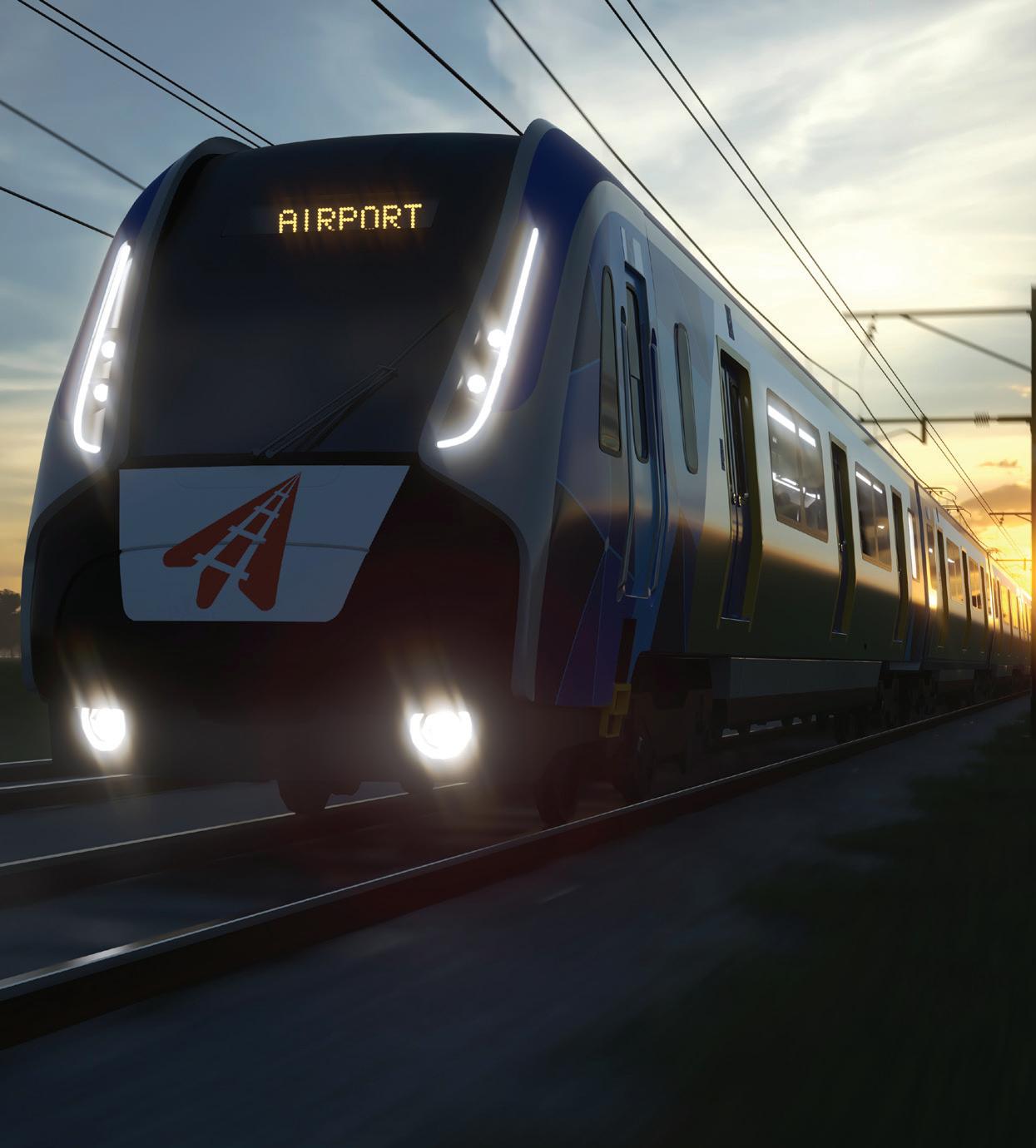
Issue 21 November 2021 ROAD - RAIL - AIRPORT - PORT - URBAN - UTILITY The next generation of digital INFRASTRUCTURE WestConnex: Australia’s largest road project tunnels through BUILDING THE LONG-AWAITED MELBOURNE AIRPORT RAIL

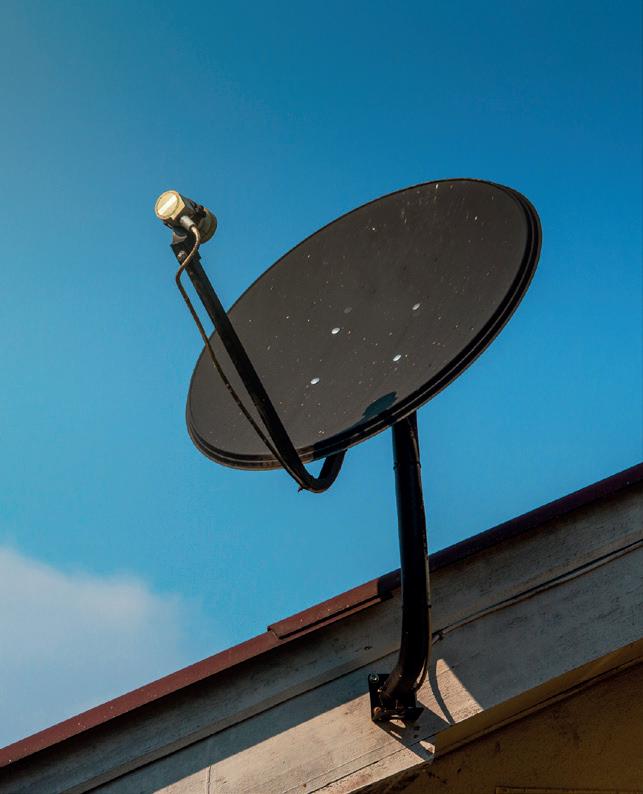
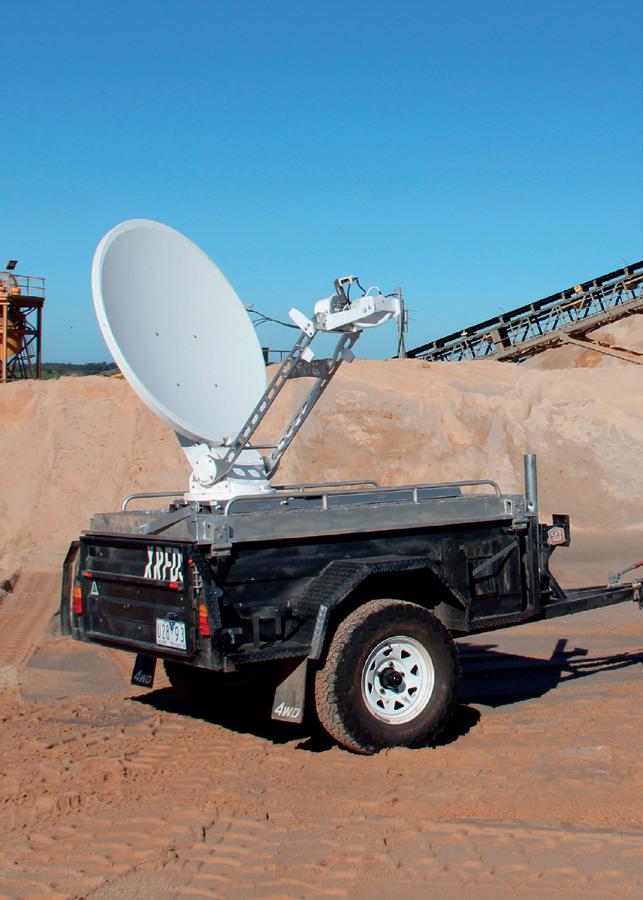


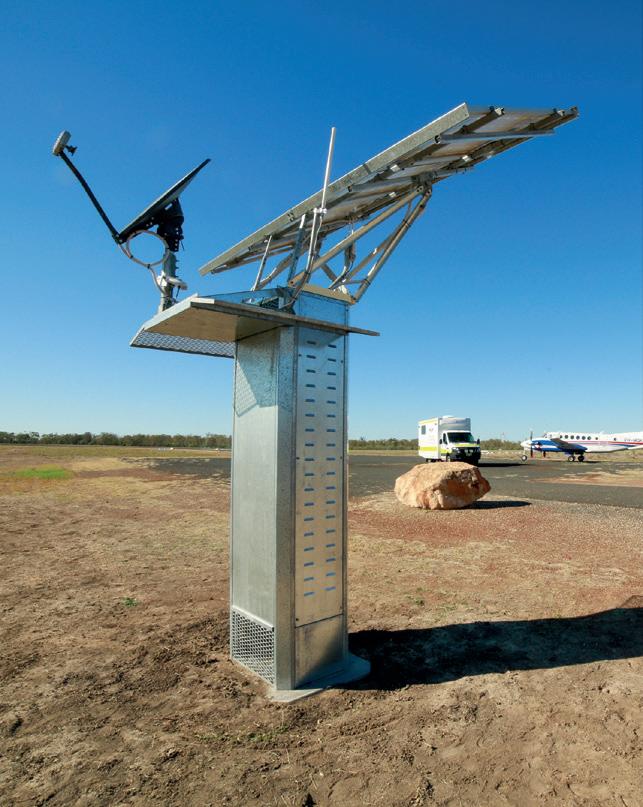


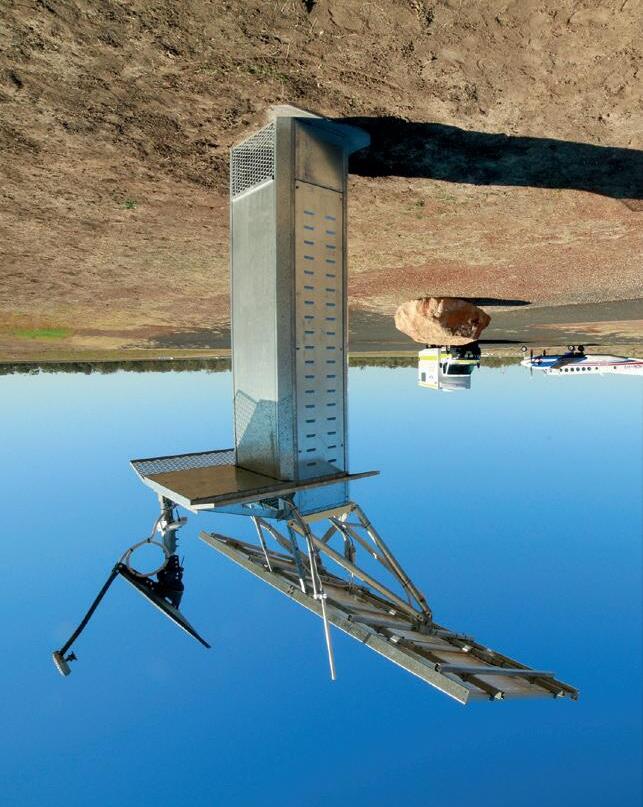
Supporting Speak to us on (03) 8566 8312 or visit apn.net.au for more information. Internet that Moves with You WiFi Solutions for Remote Australia
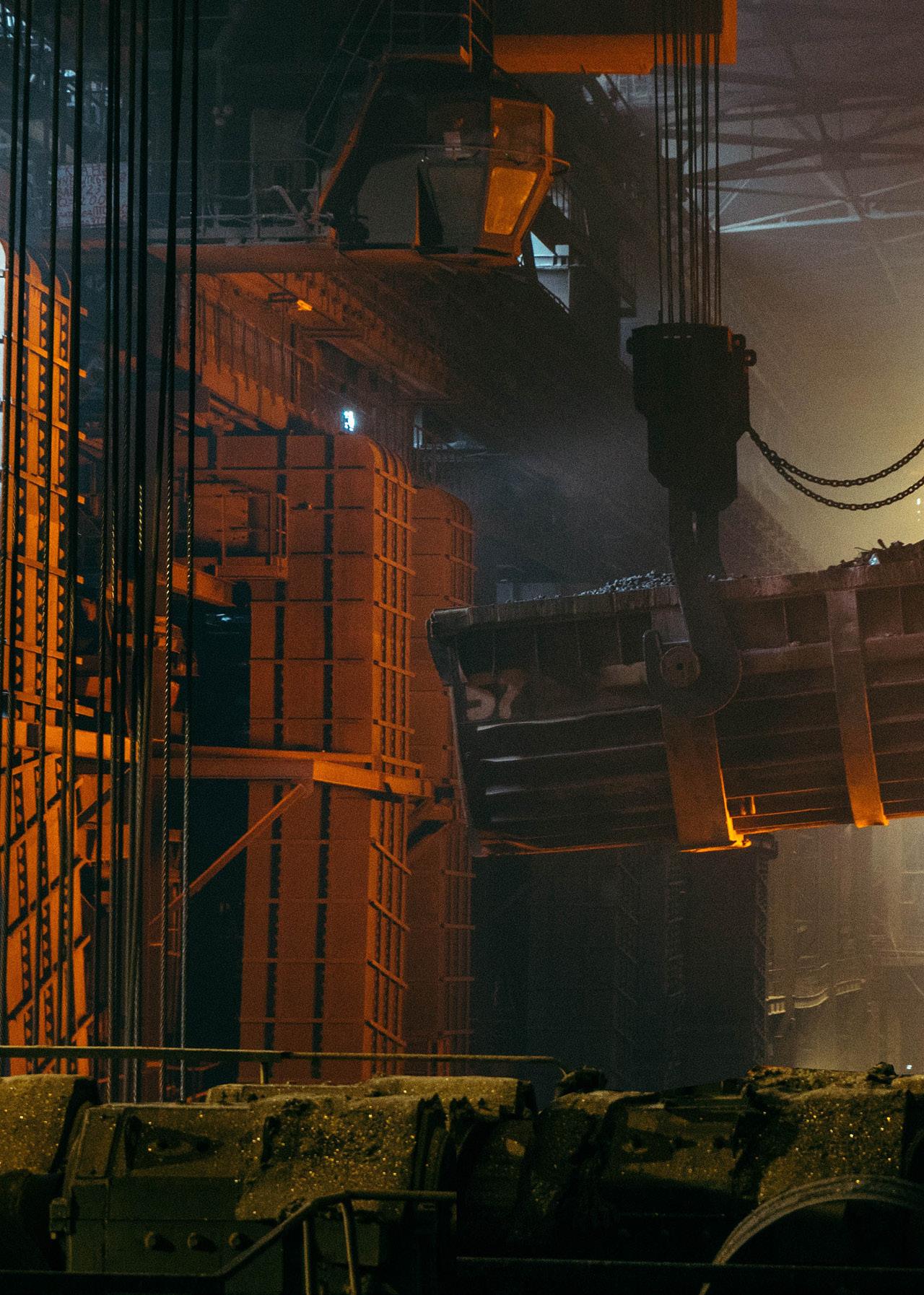

1300 062 064 | polymaster.com.au See our range 25 YEAR DESIGN LIFE
 Published by
Published by
Monkey Media Enterprises
ABN: 36 426 734 954
C/- The Commons, 36–38 Gipps St, Collingwood VIC 3066
P: (03) 9988 4950
F: (03) 8456 6720
monkeymedia.com.au info@monkeymedia.com.au infrastructuremagazine.com.au news@infrastructuremagazine.com.au
Editor Jessica Dickers
Journalists
April Shepherd
Lauren DeLorenzo
Annabelle Powell
Christopher Allan
National Media and Events Executives
Rima Munafo
Brett Thompson
Design Manager
Alejandro Molano
Designers
Jacqueline Buckmaster
Danielle Harris
Luke Martin
Publisher Chris Bland
Managing Editor
Laura Harvey
ISSN: 2206-7906
EDITOR’S WELCOME
We’re nearing the end of the year, and with vaccination rates climbing and roadmaps outlining plans for a restriction-free new year, thoughts are turning towards 2022 and beyond.
We’ve seen the release of several key future-planning documents recently, including Infrastructure Australia’s 2021 Australian Infrastructure Plan and Infrastructure Market Capacity Report, as well as calls for reform from across the sector.
This is a critical moment in Australia’s history; we’re dealing with the impacts of COVID-19, increases in cyber risks, and still rebuilding from floods and bushfires. The pipeline of infrastructure projects is one of the biggest the country has ever seen, so we need to have the skilled workforce and seamless procurement process to go with it.
Research shows that the infrastructure industry in Australia has low levels of productivity, a slow uptake of technology and is male-dominated, with construction having the second highest ranking gender pay gap.
Industry leaders are calling for reforms around infrastructure delivery to increase productivity, with changes needed to unlock key opportunities around embedding sustainability and resilience, supporting regional areas, and investing in technology and digital transformation.
Recent reports have found that there will come to a point in the next two to three years where the industry will be under pressure to meet demand. These reforms need to happen now and focus on collaboration between industry and government, to prepare for the future.
While these are heavy challenges, they also highlight that there are lots of opportunities for growth in the sector. We’ve made it a focus of this edition of the magazine to cover these important issues and get the insight from leaders who are at the forefront and pushing for change.
Infrastructure Australia explores its recent reports in-depth, the Civil Contractors Federation talks about the approach needed as the country starts to open up post-COVID, the National

Association of Women in Construction explains the widening gender pay gap and what needs to happen now, and the Australasian Railway Association outlines the procurement reform needed for rail construction. On the projects side of things, we also take a look at some of the biggest road and rail projects underway, including the Melbourne Airport Rail and WestConnex.
This edition also has a strong focus on digitisation, IoT and cloud communication as this is an area we believe has the most potential and opportunities right across the industry. Our recent event, the Critical Infrastructure: Digitisation Series, was held in October and featured two freeto-attend Virtual Conferences exploring how digital technologies are impacting infrastructure. Both conferences produced fascinating discussions on the future of digital including digital twins, robotics, AI, the Victorian Digital Asset Strategy, the Digital Territory Strategy, the Australian BIM Strategic Framework, 5G, cyber security, data privacy, the digital divide, and the NBN. We have lots of coverage on the event in this edition, but if you’d like to watch the recordings on-demand, you can register for free at www.critical-infrastructure.com.au/ watch-digitisation-on-demand/.
We’ll be running one more virtual event this year that will look at how best to plan your marketing for 2022. If you’re starting to think about your marketing strategy for next year and aren’t sure how to reach the infrastructure sector, join us for a free webinar on Thursday 25 November. You can register at https:// www.monkeymediaevents.com.au/b2bmarketing-in-2022/.
Fingers crossed we’ll be able to meet up offline at some industry events in the new year as I can’t wait to be able to discuss these industry challenges and opportunities with you in person in 2022.
Jessica Dickers Editor
Drop me a line at jessica.dickers@monkeymedia.net.au or feel free to call me on 03 9988 4950 to let me know what you think.
Don’t forget to follow Infrastructure magazine on social media – find us on LinkedIn, Twitter and YouTube.
2 November 2021 // Issue 21 www.infrastructuremagazine.com.au
Issue 21 November 2021 ROAD RAIL AIRPORT - PORT URBAN UTILITY The next generation of digital INFRASTRUCTURE WestConnex: Australia’s largest road project tunnels through BUILDING THE LONG-AWAITED MELBOURNE AIRPORT RAIL
your leading source of news for the local government sector
Council has been developed to keep you up-to-date with all of the latest news, discussions, innovation and projects in the local government sector.

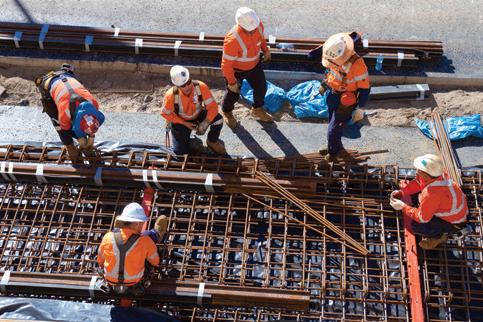
Council is fully integrated across print and online, featuring a website updated daily with the latest industry news, a weekly e-newsletter delivered direct to your inbox, and a quarterly magazine that can be read in print and online.
Published by industry publishing experts Monkey Media, Council will arm community decision-makers with the critical information they need to deliver a better future for cities, towns and suburbs all over Australia.


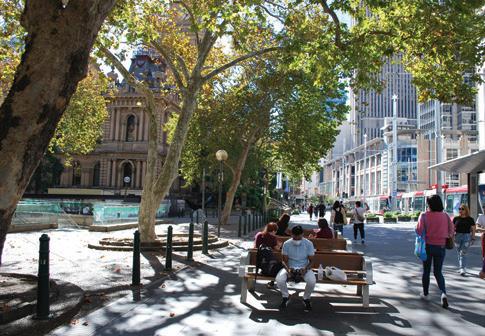



www.councilmagazine.com.au info@councilmagazine.com.au
COUNCIL
MAGAZINE
HEAD TO THE WEBSITE TODAY to sign up for the FREE WEEKLY NEWSLETTER!

HEADING
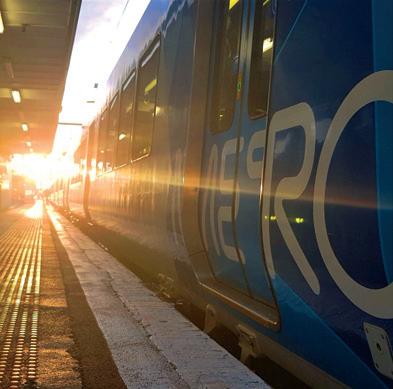

FINDINGS FROM THE INFRASTRUCTURE MARKET CAPACITY REPORT
The Infrastructure Market Capacity report released by Infrastructure Australia in October lays out the opportunity and the challenges associated with Australia’s unprecedented infrastructure spend.
REOPENING AUSTRALIA AND THE NEED FOR A NATIONAL APPROACH
As Australia’s COVID-19 vaccination rates continue to rise, our focus increasingly turns to the need to re-open Australian businesses in an agreed and coordinated manner.
THE WIDENING GENDER PAY GAP IN CONSTRUCTION
HOW SMART BUILDINGS AND SMART GRIDS WORK TOGETHER TO REDUCE
BUILDING THE LONG-AWAITED MELBOURNE AIRPORT RAIL
The much talked about Melbourne Airport Rail project is becoming a reality, with progress being made towards making future travel to and from Melbourne Airport that much easier. INCLUSIVE
SPREADSHEETS ARE PUTTING YOUR PROJECT AND PORTFOLIO MANAGEMENT AT RISK
There’s no doubt that the entire construction industry – from owners to managers, contractors and suppliers – rely on spreadsheets. However, just because there is a critical mass of users, it doesn’t mean that spreadsheets should be used for the most important aspects of project and portfolio management.
THE NEXT GENERATION OF DIGITAL INFRASTRUCTURE
The world is changing at a rapid pace, with industries having to consider the critical infrastructure needed to sustain many generations to come. Dr Ian Oppermann, Chief Data Scientist for the NSW Government and Industry Professor at UTS, joined this year's Critical Infrastructure: Digitisation Series event program to discuss the new world of digital infrastructure, from 6G and safe data sharing, to all-encompassing IoT networks.
THREE STEPS TO LEVERAGING THE POWER OF YOUR DATA
SECURITY
KEY TAKEAWAYS: CYBER SECURITY AND DATA PRIVACY
As the Internet of Things (IoT) expands available datasets and smart technology is implemented in the utility and infrastructure sectors, the need for robust cyber security systems has never been greater. A panel at the recent Critical Infrastructure: Digitisation Series Virtual Conference invited industry leaders to discuss potential risks to these systems, the impact of new security legislation, and what asset owners should be doing to protect their infrastructure.
SECURING INDUSTRIAL INFRASTRUCTURE IS A JOURNEY
When we meet with industrial customers, we often hear some version of the following: “We’re digitising to improve our industrial processes, increase productivity and grow customer satisfaction, but now we’re worried about malware interrupting operations. What can we do?”
4 November 2021 // Issue 21 www.infrastructuremagazine.com.au
THE CARBON FOOTPRINT SHARED 2032 OLYMPIC GAMES DREAM – LONG-TERM LEGACY REQUIRES GENUINE COLLABORATION 18 20 22 24 26 46 50 38 40 44 A WORD FROM INFRASTRUCTURE AUSTRALIA INDUSTRY INSIGHTS RAIL IoT & CLOUD COMMUNICATION
DESIGN OF PUBLIC INFORMATION SYSTEMS THE PROCUREMENT REFORM NEEDED FOR RAIL CONSTRUCTION THE CHANGING FACE OF RAIL 28 32 34 36 28

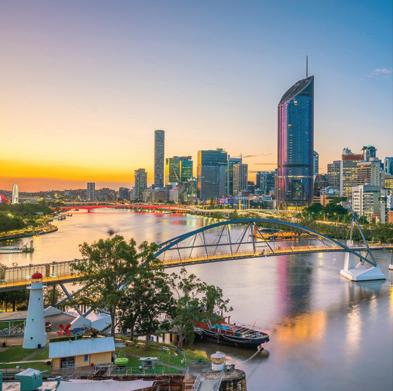

AUSTRALIA’S LARGEST ROAD INFRASTRUCTURE PROJECT TUNNELS THROUGH
Sydney’s WestConnex project has just marked a significant tunnelling milestone and is now moving into its next exciting phase.
THE UNSEEN MACHINES BEHIND OUR BIGGEST INFRASTRUCTURE PROJECTS
IMPROVING INFRASTRUCTURE RESILIENCE TO BUSHFIRES
CSIRO’s Bushfire Adaptation research leader, Justin Leonard, explains how Australia’s national science agency, CSIRO, is working with industry to tackle a major threat to critical infrastructure –bushfires.
RETURNING TO THE OFFICE: HOW SAFE WILL IT BE?
A MENTAL HEALTH AND WELLBEING ROADMAP FOR SUPPLY CHAIN WORKERS
The global pandemic has unquestionably placed immense pressure on the supply chain sector, and no more so than on the people working on the frontline.
REGULARS
MAKING THE MOST OF STRATEGIC PARTNERSHIPS IN RENEWABLE ENERGY
When the ground is shifting or the going is tough, joining forces can make a lot of sense. The booming Australian renewable energy market is a changing and challenging environment, but it also offers enormous opportunity for developers and investors willing to work together for mutual benefit.
8 VIC CONSTRUCTION SECTOR HIT HARD BY LOCKDOWNS, RESTRICTIONS AND MANDATES
9 ARTC ANNOUNCES MAJOR INLAND RAIL COLLABORATIVE AGREEMENT
10 THREE COMPANIES SHORTLISTED FOR NSW COFFS BYPASS CONSTRUCTION
12 FRAMEWORK TO REOPEN AUSTRALIAN AIRPORTS ANNOUNCED
12 CONTRACT AWARDED FOR $1.18 BILLION WARRINGAH FREEWAY UPGRADE
14 WHAT THE INDUSTRY IS SAYING ABOUT DIGITAL AND CLOUD INFRASTRUCTURE 16 KEEPING YOU
5 www.infrastructuremagazine.com.au November 2021 // Issue 21 CONTENTS
2 EDITOR’S WELCOME 6 CONTRIBUTORS 68 ADVERTISERS’ INDEX 68 FEATURES SCHEDULE NEWS
POWERED ON 52 56 60 62 64 66 TUNNELS DISASTER MANAGEMENT FUNDING / INVESTMENT
HEADING
Kristine Scheul
National Chair, the National Association of Women in Construction (NAWIC)
Kristine has been a member of the National Association of Women in Construction (NAWIC) for almost 15 years and is the current NAWIC National Chair. She is passionate about supporting women in the construction industry and has a long history in construction law. Kristine is also currently the Executive Branch Manager at Transport Canberra City Services.
Byline
Preamble
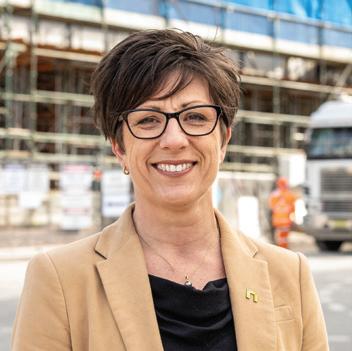
 FChris Melham CEO,
FChris Melham CEO,
Civil Contractors Federation (National)
Chris has accumulated over 30 years of experience as an industry advocate within the not-for-profit industry association sector. He has represented a number of industries at state, federal and international levels, and currently represents Australia's civil construction industry as Chief Executive Officer of Civil Contractors Federation National (CCF).
In his capacity as the CCF National CEO, Chris also sits on a number of high level Federal Government Advisory Committees representing the interests of CCF, including: Australian Government Security of Payments Working Group; Australian Taxation Office Fuel Schemes Advisory Group; National Heavy Vehicle Regulator Industry Reference Forum; Standards Australia Council; and the Australian Construction Industry Redundancy Trust Fund.
Naomi Frauenfelder Chief Executive Officer,
Healthy Heads in Trucks & Sheds
Naomi is Healthy Heads in Trucks & Sheds’ inaugural CEO, having previously been Executive Director of the TrackSAFE Foundation – an Australian rail industry not-for-profit that addresses suicide on the rail network, and the resultant trauma caused to train drivers and other frontline staff.
Naomi has spent her career to date honing her passion for working nationally to unite industries behind significant causes such as mental health, providing individuals and organisations with the resources they need to face challenges head-on, creating cultures of care and support.

6 November 2021 // Issue 21 www.infrastructuremagazine.com.au INFRASTRUCTURE
Contributors
Contributors
Catherine Baxter
Chief Operating Officer, Metro Trains Melbourne, and Chief Executive Officer, Metro Academy
Catherine leads a team of dedicated and passionate people who are focussed on ensuring that Metro delivers on its promise to the travelling public of Melbourne. She has extensive experience and expertise in rail operations, having previously held executive roles in large national ASX-listed businesses including Aurizon, UGL, and Boral. With 30 years of experience in rail, she ensures a strong focus on safe and disciplined operations.
Catherine is currently the CEO of Metro’s Registered Training Organisation the Metro Academy. She is also a Fellow of CPA Australia, and member of CITL Chartered Institute Transport and Logistics, an Associate Fellow of ANZ Institute of Managers and Leaders, and a member of the Australian Institute of Company Directors. She is also leading Metro through a yearly Annual Performance Improvement Plan (APIP).

Priscilla Radice

Chief Executive Officer, Infrastructure Association of Queensland (IAQ)
Priscilla is a dynamic senior leader and a trusted business advisor on change management and leadership, and is a well-regarded project director in port development, transport and logistics, and city strategy sectors.
Before her role with IAQ, Priscilla was a Principal at Arup. In her role as Head of Strategy for Transport & Resources Asia Pacific, she was responsible for setting the overall strategic business direction, winning numerous Project Director roles and rolling out a sector restructure, which resulted in outstanding revenue uplift and an empowered client centric leadership team.
Prior to Arup, Priscilla was Head of Strategic Projects at the Port of Brisbane and has held various executive positions in economic development and city shaping roles in other capital and regional cities in Australia.
Dr Ian Oppermann
Chief Data Scientist, NSW Government
In addition to his role within the Department of Customer Service, Ian is also an Industry Professor at the University of Technology Sydney, and was previously the CEO of the NSW Data Analytics Centre.
Ian has nearly 30 years of experience in the ICT sector. He has held senior management roles in Europe and Australia as Director for Radio Access Performance at Nokia, Global Head of Sales Partnering (network software) at Nokia Siemens Networks, and then Divisional Chief and Flagship Director at CSIRO. He is considered a thought leader in the area of the Digital Economy and has contributed to six books and co-authored more than 120 papers.

7 www.infrastructuremagazine.com.au November 2021 // Issue 21 INFRASTRUCTURE
VIC CONSTRUCTION SECTOR HIT HARD BY LOCKDOWNS, RESTRICTIONS AND MANDATES
Victoria’s construction industry has faced numerous challenges and changes in the later half of 2021, with workplace restrictions, vaccine mandates, site shutdowns and violent protests taking its toll on the essential sector.
In August, the Victorian Government announced a lockdown extension and tougher restrictions for Melbourne’s sixth lockdown, including additional restrictions for the construction industry as the COVID-19 Delta variant cases rose.
The new restrictions stated that large-scale construction sites would be limited to 25 per cent for site capacity or five workers per site, whichever is greater, with small-scale construction sites allowed five workers per site.
Following on from the August restrictions, the Victorian Government launched a COVID compliance blitz in September to target the spread of the virus in the construction sector and ensure that sites could remain open. This included mandates on vaccines – including the requirement for workers to show evidence to their employer of having had one dose of the COVID-19 vaccine before they return to site on 5 October.
Construction sites were identified as a major source of transmission, and the four-week blitz saw a ‘zero tolerance’ approach, applying fines and prohibition notices in response to any serious non-compliance.
The restrictions and vaccine mandates introduced by the Victorian Government were met with backlash from a small percentage of the wider construction industry, with more than 500 protesters gathering outside the Construction, Forestry, Maritime, Mining and Energy Union (CFMEU) office on Monday 20 September. Bottles and crates were thrown at officials,
prompting police to use rubber bullets and tear gas to disperse the crowd.
A two-week shutdown was announced just hours after the protests and came into effect from 11.59pm that same day.
Protests continued for several days, beginning in Melbourne’s city centre and spreading to other Melbourne landmarks throughout the week, including the city’s war memorial and the West Gate Bridge.
Victorian Premier, Daniel Andrews, said at the time, “There is no excuse for the terrible behaviour we have seen in our city over the last two days. We know vaccinations are our only ticket out of this pandemic. There is no other way.”
In early October, the Victorian construction sector reopened, following the release of the State Government’s Construction Sector Roadmap, which detailed the steps to reopening the industry in line with public health recommendations.
The shutdown eased at 11:59pm on 4 October, with new restrictions detailing that in order to work onsite, all workers must carry an Authorised Worker Permit and must have had at least one vaccine dose.
Additionally, every construction site in Victoria would be required to have a designated fully trained COVID Marshal to ensure compliance with the Chief Health Officer‘s directions. Subject to continued high levels of compliance by the industry, workforce caps will progressively increase. Once the 70 per cent double dose milestone has been reached, largescale construction can return to 100 per cent of its workforce.
Caps will be removed when Victoria reaches its 80 per cent target, and in addition, all onsite workers must be fully vaccinated by 13 November.

NEWS
ARTC ANNOUNCES MAJOR INLAND RAIL COLLABORATIVE AGREEMENT
The Australian Rail Track Corporation (ARTC) has secured a collaborative framework agreement with Freight Connect (a consortium including Laing O’Rourke and FKG Group) for the delivery of Inland Rail civil works in Northern New South Wales and Southern Queensland.
The agreement will focus on an approximately 85km section between North Star in New South Wales and Whetstone in Queensland as well as a separate 14km package south of Moree called Narrabri to North Star Phase Two.
ARTC Inland Rail Interim Chief Executive, Rebecca Pickering, said the announcement was the culmination of months of work by ARTC and was a crucial part of the project as it delivered the ‘missing link’ between the two states where no previous rail line existed.
“Inland Rail is a fast freight backbone that will transform how goods are moved around Australia – it’s also a catalyst for regional employment and economic opportunity,” Ms Pickering said.
“Both sides of the border will benefit significantly from Inland Rail, with more than 11,800 direct and indirect jobs in Queensland and 7,500 in New South Wales expected at the peak of construction in 2023-24.
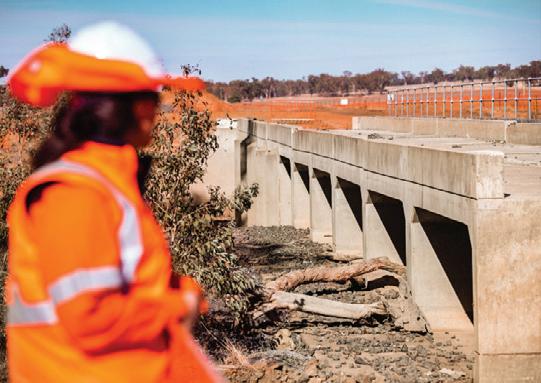
“We’ve already committed 641 contracts to businesses in Queensland and 657 in New South Wales worth more than $1.95 billion across the two states, and this agreement will create even more economic stimulus as the country recovers from the impacts of the pandemic.”
A 50-50 joint venture between ACCIONA and CPB Contractors Joint Venture (ACACPB JV) has also been appointed as the preferred proponents to work with ARTC on the Southern Civil Works Program.
“ACACPB JV will initially be working with ARTC to review reference design and develop construction plans and methodologies ahead of the development of a fully-costed proposal for the first of the works packages next year,” Ms Pickering said.
For information on Inland Rail tenders and market opportunities visit the suppliers webpage or register your interest on the ICN Gateway.
DON’ T JUST WATERPROOF. FUTURE PROOF.
Fosroc offers
solution.
9 NEWS LIQUID APPLIED TORCH APPLIED SHEET MEMBRANE
proof. AU 1800 812 864 fosroc.com.au NZ 0800 657 156 fosroc.co.nz
your project
Combined with our concrete repair mortars, grouts, sealants, industrial and surface treatments, we can provide you with a tailored construction solution. Fosroc. Future
* Fosroc and the Fosroc logo are trade marks of Fosroc International Limited, used under license. www.infrastructuremagazine.com.au November 2021 // Issue 21
THREE COMPANIES SHORTLISTED FOR NSW COFFS BYPASS CONSTRUCTION

The Coffs Harbour bypass has released a shortlist of companies invited to tender for construction of the project.
CPB Webuild Joint Venture, Acciona Seymour Whyte Joint Venture and Gamuda Ferrovial Joint Venture have been selected to take part in the tender process, which will be finalised by the end of 2021, with the successful contractor to be announced mid-2022.
New South Wales Deputy Premier and Minister for Regional Transport and Roads, Paul Toole, said this is a significant step towards a project that will transform the region.
“This will be the biggest infrastructure project in Coffs Harbour’s history, removing more than 12,000 vehicles a day from the centre of town, bypassing 12 sets of lights and saving around eleven minutes in travel time,” Mr Toole said.
Federal Member for Cowper, Pat Conaghan, said the bypass will deliver an economic boost to the region, creating about 12,000 jobs during construction.
“Not only will locals get work, but they’ll also get valuable training and experience that will be transferable to many careers or business ventures,” Mr Conaghan said.
State Member for Coffs Harbour, Gurmesh Singh, said the project is also having flow-on effects for the regional economy.
“We’ve signed up 13 local builders to carry out work on a range of at-home noise treatments, including seals to windows and doors, reglazing with acoustic glass, installation of air conditioning, acoustic insulation, or relining of exposed walls,” Mr Singh said.
“More than 30 local businesses have also been engaged for the preliminary work now taking place, and there will be more opportunities for local suppliers as work progresses.”
Three tunnels will be built for the bypass at Roberts Hill, Shephards Lane and Gatelys Road, delivering safer and quicker journeys for the thousands of locals, tourists and freight operators who use this route daily.
PEDESTRIAN & VEHICLE DETECTION




10 November 2021 // Issue 21 www.infrastructuremagazine.com.au NEWS AGD SYSTEMS PTY LTD. Unit 17/15 Valediction Road. Kings Park NSW 2148 Australia T : 02 9653 9934 E : sales@agd-systems.com.au W : agd-systems.com.au


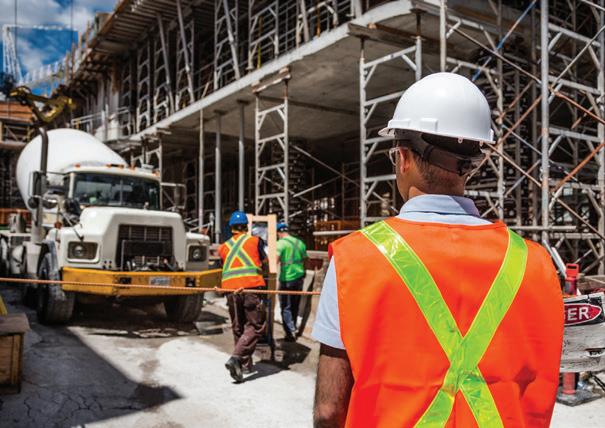
You can’t manage what you can’t see
We know you’re running a complex operation, with multiple teams across distributed sites. There’s every likelihood that you’ve got inefficient practices and duplication of effort, leading to potential time and budget blow outs, or even putting lives at risk.
Get a 360° view of your site
PerspioTM links your operational tools with plant, equipment, labour and material data from the site into one simple view. So you can better manage your risk on site, in real time. Your sites will be more efficient, have better safety outcomes and be more environmentally responsible.
Learn how PerspioTM can help streamline your operations
Inauro.io/construction
efficiency,
. IN THE KNOW Take control of your site inauro.io/construction Operational Data 3rd Party Data Field Data
Get real-time visibility of your site with PerspioTM. More
greater uptime
FRAMEWORK TO REOPEN AUSTRALIAN AIRPORTS ANNOUNCED
The Australian Government announced a reopening framework for Australia’s international airports, with quarantine arrangements to ease and passenger caps to be lifted from November.
Australian Airports Association (AAA) Chief Executive, James Goodwin, said airports would be ready to welcome back increasing numbers of Australians from overseas.
“This is a positive step in the right direction to allow more vaccinated Australians to return home and others to reconnect with family overseas, and comes just in time for Christmas,” Mr Goodwin said.
“Airports will be critical to ensuring the challenging logistics associated with resuming international travel will be successfully managed.
“It is important airports are involved in co-designing any new arrangements required as we begin this process and look forward to working closely with government agencies on these details.”
Mr Goodwin said work is needed now on the next phase of the framework where airports can welcome back international

tourists and other important cohorts such as business people, students and skilled workers.
“There needs to be a focus on bringing back international travellers to assist in returning our economy, particularly the tourism sector, back to its full strength,” Mr Goodwin said.
“We welcome the development of safe travel zones where quarantine will not be required with nations such as New Zealand and we look forward to having other highly-vaccinated nations included as part of these pilot programs.”
Brisbane Airport Corporation (BAC) welcomed the announcement of the framework, with BAC CEO, Gert-Jan de Graaff, saying the framework, including seven-day home quarantine for returning vaccinated travellers, was a sensible and safe approach that would ease pressure on the hotel quarantine system, and provided a ray of hope for families, as well as thousands of businesses that rely on inbound visitation.
“I can’t wait to see our international terminal retailers opening their doors again after nearly two years,” Mr de Graaff said.
CONTRACT AWARDED FOR $1.18 BILLION WARRINGAH FREEWAY UPGRADE
A$1.8 billion design and construction contract for New South Wales’ Warringah Freeway upgrade has been awarded.
The project will be jointly delivered by CPB Contractors and Downer EDI Works.
New South Wales Minister for Transport and Roads, Andrew Constance, said the upgrade will reduce congestion and simplify the complex road corridor, which is used by up to 250,000 vehicles each day.
“This crucial upgrade will make the Warringah Freeway more efficient and reliable for the drivers who use it every day, and will pave the way for the future Western Harbour Tunnel and Beaches Link,” Mr Constance said.
“More than 15,000 jobs will be created during construction of the entire Western Harbour Tunnel and Beaches Link program, with about 600 direct jobs created for the Warringah Freeway upgrade.”
Early works are already underway, with the main work to start early next year. Construction is expected to take approximately five years to complete, subject to the detailed design and construction program.
The Warringah Freeway upgrade includes:
♦ Upgrade 4km of the Warringah Freeway, between High Street at North Sydney and Willoughby Road at Naremburn, to reduce the amount of merging required, and improve safety and traffic flow
♦ Improve interchanges with Falcon Street at Cammeray and High Street at North Sydney, including a new northbound on-ramp at High Street which will ease pressure on the existing ramp at Berry Street
♦ Connections to the future Western Harbour Tunnel and Beaches Link

♦ Improved public transport links, with a continuous southbound bus lane from Miller Street to the Sydney Harbour Bridge
♦ Around 2.5km of new and upgraded cycleways and pedestrian paths, integrated with public transport networks, including the future Victoria Cross metro station at North Sydney
NEWS

CONCEPTUALISE YOUR NEXT PROJECT WITH HIGH RESOLUTION 3D
DESIGN I CONSTRUCT I OPERATE I MAINTAIN I EVOLVE
GO TO STORE
WHAT THE INDUSTRY IS SAYING ABOUT
DIGITAL AND CLOUD INFRASTRUCTURE
Industry leaders came together virtually in October for the Critical Infrastructure: Digitisation Series – two free-to-attend Virtual Conferences on 5 and 7 October exploring how digital technologies are impacting infrastructure. Here are the highlights from the conference.
The Critical Infrastructure: Digitisation Series was the latest event to be held under the highly successful Critical Infrastructure Summit umbrella, and took a deep dive into two sides of digital transformation: the digital technologies that are being employed in the design and construction of infrastructure; and the infrastructure being built to enable Australia’s digital transformation.
Created and run by Monkey Media – the publishers of Infrastructure, Utility, Energy, Council and Pump Industry magazines – the event saw more than 650 infrastructure professionals registered over the two days.
The conferences included:

easily enable high-value outcomes, from live condition monitoring and bushfire mitigation, to customer analysis and risk-based maintenance planning. Because Snowflake is built for ease of use, speed of development, and hands-off maintenance, Snowflake’s customers report dramatic reductions in time to value and total cost of their data projects, and we appreciate their insights and input into the event.
IMPLEMENTING DIGITAL IN PHYSICAL ASSETS
♦ Digital Infrastructure: Implementing digital in physical assets – 5 October
♦ Cloud Infrastructure: The systems behind the new virtual economy – 7 October
With speakers from the Federal Government, NT Infrastructure Commission, NSW Government, Office of Projects Victoria, UNSW Canberra, PwC, Digital Twinning Australia, Cross River Rail, Australasian BIM Advisory Board, IoT Alliance Australia, Infrastructure Australia, Queensland AI Hub, and nbn Co – there were in-depth discussions across both conferences. These conferences wouldn’t have been possible without the support of the sponsors – Series Partner Everbridge, Session Partner Snowflake, and Sponsor Hexagon.
The Snowflake Data Cloud is being used across the utilities sector to quickly and easily digitalise both business and operational technologies. By collapsing data silos into Snowflake’s data platform, utility businesses are able to quickly and
Conference 1 explored how technology can help deliver a more profitable, resilient infrastructure industry and a better built environment. It looked at how tools and technology like BIM, big data and analytics are changing how infrastructure is planned, designed, built and managed.
Wayne Patterson, Director of Spatial Operations, Spatial Services, NSW Department of Customer Service, kicked off the event with his keynote presentation on the NSW Spatial Digital Twin.
Wayne has led the team that developed the ground-breaking NSW Spatial Digital Twin, a 4D (3D+time) Foundation Spatial Data Framework. The NSW Spatial Digital Twin is helping the NSW Government with infrastructure asset planning and management, integration with land use planning, data collaboration, and sharing.
Wayne also gave delegates a live demonstration of the digital twin, showcasing what it is capable of and how it can be used to best advantage. It was a fantastic session, combining a look at what the wider industry is doing, with the advancements happening in NSW and a first-hand demonstration of the digital twin in action.
Our second speaker was Sue Keay, CEO of the Queensland AI Hub. Sue was formerly a Research Director for CyberPhysical Systems at CSIRO’s Data61, and the Chief Operating Officer for the Australian Centre for Robotic Vision. She delivered a fascinating presentation outlining how robotics and automation are being implemented in the critical infrastructure sector, and the opportunities available.
14 NEWS
We then had an industry panel looking at digital asset strategies around Australia, featuring three infrastructure leaders. The panellists were: Luke Belfield, Acting Victorian Chief Engineer, Office of Projects Victoria; Louise McCormick, Interim Infrastructure Commissioner of the Northern Territory, NT Infrastructure Commission; and Andrew Curthoys, Digital Relationship Manager, Information Management & Technology, Cross River Rail, and Chair, Australasian BIM Advisory Board.
In his role at the Office of Projects Victoria, Luke shared his insights into the Victorian Digital Asset Strategy and how this has supported the state’s huge pipeline of transport mega-projects. Louise explored how the NT is implementing digital technologies through the Digital Territory Strategy. While Andrew discussed both the approach to BIM that the Australian BIM Strategic Framework recommends to government to ensure consistency, as well as his role at Cross River Rail and how the project has been implementing technologies in its construction.
It was a great discussion that covered where Australia's critical infrastructure sits when it comes to digitisation, the biggest challenges to the implementation of digital technologies, and where are the biggest opportunities that perhaps aren’t being focused on enough. This was in addition to questions sent through by delegates, who were able to participate in the panel and ask their burning digital questions to the three speakers.
Then, Genéne Kleppe, Chief Executive Officer, Digital Twinning Australia, closed the day with a frank look at how asset owners should actually be digitising their physical assets. Genéne said whether your innovation is seeking sustainability or disruption, digitising critical infrastructure requires getting out of the weeds. Digitising value propositions exist, with roadmaps abound and the simplicity of what you need to do will surprise you.
THE SYSTEMS BEHIND THE NEW VIRTUAL ECONOMY
While the first event was all about implementing digital technologies in physical assets, the second day of the Digitisation Series focused more on the digital infrastructure that has become indispensable to the functioning of society. This session looked at topics including 5G and the digital economy, data privacy and cyber security, the digital divide between regional and metropolitan Australia, and a look at the NBN rollout.
We were lucky enough to start the conference with a recorded presentation from the Hon. Paul Fletcher MP, Minister for Communications, Urban Infrastructure, Cities and the Arts, Federal Government.
Minister Fletcher discussed 5G, connectivity and the digital economy and gave several great examples of projects and initiatives already underway across the infrastructure industry that demonstrate 5G capabilities, including autonomous vehicles.
Dr. Ian Oppermann, Chief Data Scientist, NSW Government, then delivered an in-depth presentation on the future of the infrastructure sector and the opportunities in digital. He touched on data sharing and the next generation of digital infrastructure. We covered Ian’s presentation in more detail in the article on page 40.
Day two also included an industry panel session, this time looking at an important topic when it comes to digital and cloud infrastructure: cyber security.
Panellists included:
♦ Robert Di Pietro – Partner, National Lead for Critical Infrastructure & Operational Technology, PwC Australia Cyber Security
♦ Elena Sitnikova – Critical Infrastructure Protection, Research Leader, UNSW Canberra at the Australian Defence Force Academy (ADFA)
♦ Frank Zeichner – CEO, IoT Alliance Australia
These three speakers have a wealth of cyber and critical infrastructure experience between them which made this a must-watch panel for anyone working in infrastructure. We have also deep dived into the key takeaways from this panel in an article on page 46.
Peter Colacino, Chief of Policy and Research at Infrastructure Australia, then joined us to talk about the digital divide between regional and metropolitan Australia, and the opportunities there are to increase digital access around the country. While discussions on digital infrastructure can sometimes focus on the technical systems, we can’t have a discussion about the next phase of digital infrastructure when parts of the country still don’t have equal access to these services.
Peter has led the delivery of the landmark 2019 Australian Infrastructure Audit, and the recently released 2021 Australian Infrastructure Plan and Infrastructure Market Capacity Report, so he was able to explore this topic within the context of the current challenges and opportunities in the sector.
Closing out the conference was John Parkin, Chief Engineering Officer at nbn Co, who gave a fantastic update into the NBN rollout and what’s next. Missed the Critical Infrastructure: Digitisation Series Event?
You can still watch the panel session, or any of the other presentations on demand. Register for free at www.critical-infrastructure.com.au/watch-digitisation-on-demand/.
15 NEWS www.infrastructuremagazine.com.au November 2021 // Issue 21
KEEPING YOU POWERED ON
Widely used in infrastructure settings that require uninterrupted and high levels of power, generators are a critical part of getting the job done.
From the initial investment, it’s important to regularly maintain your generator. A structured maintenance approach ensures that your generator’s performance is maximised whilst extending its life span.
In addition to specialist generator technicians conducting services, there are routine checks that you can do to keep your power running. Each day (or weekly for standby) do a walk around inspection which includes:
♦ Ensure fastenings, fixings and connections are secure
♦ Check the condition and tension of fan and charging alternator belts
♦ Ensure fan and exhaust guards are in place and secure
♦ All filter caps are in place
♦ Check for leaks – coolant, oil and fuel
♦ All pipes are secure and in good condition
♦ Fuel, oil and coolant levels are correct
♦ All hoses are in good condition and connections secure
♦ Battery terminals are tight and electrolyte level is correct
♦ Control panel does not indicate any errors
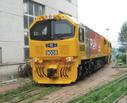
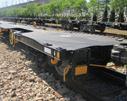



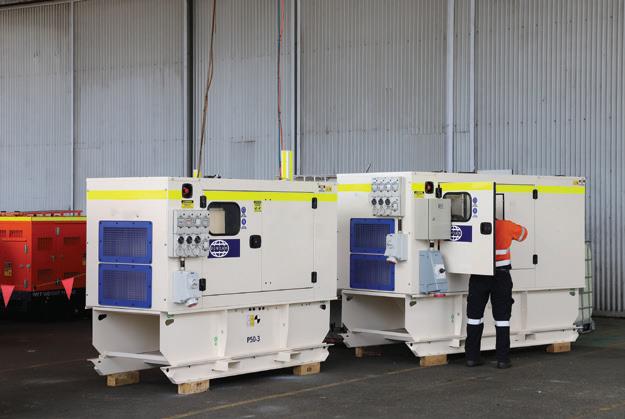
Idle standby generators require an additional operational check every two weeks by running the generator for five minutes, and every month another run for one to two hours on 50 per cent load, in addition to draining the water and sediment from the fuel tank and tank bund area.
AllightSykes is the exclusive distributor of FG Wilson diesel generators in Australia with its range spanning 11kVA-1ph through to 1650kVA-3ph.
For your generator to continuously perform at an optimum level, a regular service schedule is recommended. AllightSykes 24/7 specialist generator technicians can perform three monthly, six monthly and 12 monthly scheduled services, including the option of an Extended Service Contract covering replacement costs and labour.



• Pre-award audits of manufacturers, subcontractors and suppliers
• Experienced, certified and qualified inspectors
• Verification of manufacturing and testing in accordance with AS standards
• Surveillance inspections throughout the entire manufacturing process
• Individual inspection and test of completed equipment
• Pre-delivery and ship loading inspections
• ISO 9001-2015 QMS certified company
November 2021 // Issue 21 www.infrastructuremagazine.com.au
NEWS // SPONSORED EDITORIAL
Quality Verification of Railway Locomotives, Wagons, Steel Rails & Track Turn-Outs
Quality Technical Services LLC Shanghai Operations Office Contact: Frederik Ford Mobile: +86-13501790361 www.qtsinspect.com For more information, please visit allightsykes.com or get in touch at service@allightsykes.com. 16

TOUGH EQUIPMENT SUPPORTING CRITICAL INFRASTRUCTURE

As the original equipment manufacturer of Allight towers and Sykes pumps in Australia, and the only distributor of Perkins engines and FG Wilson generators, AllightSykes works with our customers throughout the entire product life cycle from concept to aftersales care.
We maintain a strong local Australian footprint with two well established manufacturing facilities and five service branches. Our Australian made products are distributed throughout the world, and because we design and manufacture our own products, genuine parts are always avaialble.
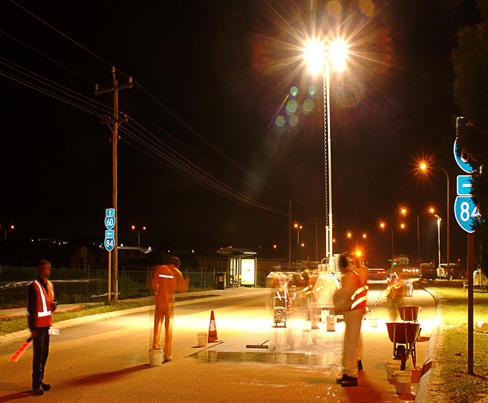
AUSTRALIA | NEW ZEALAND | NORTH AMERICA | SOUTH AMERICA | DUBAI | ASIA | AFRICA allightsykes.com
FINDINGS FROM THE INFRASTRUCTURE MARKET CAPACITY REPORT

 Tby Peter Colacino, Chief of Policy and Research, Infrastructure Australia
Tby Peter Colacino, Chief of Policy and Research, Infrastructure Australia
The Infrastructure Market Capacity report released by Infrastructure Australia in October lays out the opportunity and the challenges associated with Australia’s unprecedented infrastructure spend.
he commitment to infrastructure investment laid out by governments is a central component of our economic recovery roadmap to the COVID-19 pandemic, as well as laying the foundation for future economic growth.
Infrastructure Australia strongly supports this ambitious investment agenda to support productivity growth and lift Australia’s standard of living. However, this investment must also be matched with reform which requires both a maturing of the way we plan for and buy infrastructure, as well as how it is built, maintained and operated.
AN OPPORTUNITY FOR INDUSTRY TO GROW AND INVEST IN NEW CAPABILITY
The doubling of investment in major infrastructure over the next three years presents a significant opportunity for industry to grow and invest in new capability.
It also presents an opportunity for employment, with 105,000 jobs potentially unfilled in an industry that employs 182,000 people today.
However, the opportunity presented by the Market Capacity Program is the ability of industry to deliver this growth and move from a cycle of ‘infrastructure booms’ to a new normal of elevated activity, supported by a skilled workforce, an efficient and innovative industry, knowledgeable and capable public clients and mature, responsive decision-making, approval and commercial systems.
GLOBAL LEADERSHIP
Australia has a legacy as a global leader in infrastructure delivery and procurement model design.
Our model of Public Private Partnership has been exported globally, our mineral resource supply chains are some of the world’s most efficient and our electricity grid is the world’s largest.
However, our infrastructure sector – particularly the construction sub-sector – lags our international peers in the adoption of digital technology, supply chain development, workforce diversity, consideration of sustainability and the adoption of new delivery models.
If we are to deliver on the ambitious promise set out by the record $218 billion spend by 2025, the sector must modernise.
This modernisation would embrace new ways of working, seek out and adopt best practice and learn from others both here and abroad.
2021 AUSTRALIAN INFRASTRUCTURE PLAN
The 2021 Australian Infrastructure Plan, released in September, lays out the reform agenda to meet this challenge, and we have sought to balance the need to both deliver the infrastructure investment pipeline and support reform.
However, it is critical that action is taken in the short-term to align future project announcements and schedules to the capacity of the market in order to avoid cost escalation and improve value for money.
In order to deliver on the significant commitment to infrastructure spending, it will be necessary to fully engage the industry as a whole – the full spectrum of organisations, both large and small.
To better accommodate industry, procuring agencies will need to consider the size, risk profile, timing and packaging of infrastructure projects in order to ensure a competitive tender environment and to ensure that Australian businesses can fully participate in the sector.
We also need to lower barriers to entry to the market and increase the exportability of Australian capability through the adoption of international standards and approaches, including potentially contract suites like NEC or FIDIC.
THE REFORM OPPORTUNITY
Infrastructure is not a short-term proposition because major projects take years to deliver and operate for many decades. A poorly planned or delivered project can lock many years of inefficiency into the economy with far-reaching consequences. To overcome this challenge, reform is needed to improve front-end planning, develop procurement strategies to match
18 November 2021 // Issue 21 www.infrastructuremagazine.com.au A WORD FROM INFRASTRUCTURE AUSTRALIA

projects, understand the need to build sustainable market capacity and enhance due diligence to better manage risk and unlock efficiency.
All public infrastructure is delivered in partnership between industry and government, but the strength of these partnerships can vary.
At an industry level, trust needs to be strengthened between government, business and the community.
A transparent infrastructure pipeline partnered with wellplanned projects can unlock the capability for a step change in construction productivity.
Embracing new modern methods of construction and moving from a project-to-project approach to procurement, to a more sophisticated view of supply chains and networks, as well as utilising digital tools to enable change, is vital.
The building blocks of this approach are not new and the lessons of project challenges are painful to learn.
Over the next five years, more than 80 per cent of the future project pipeline by value is transport infrastructure, and on average three in four of those projects will be delivered over budget. It’s our hope that the lessons of poor project performance would be learnt once, and then shared.
In shifting to become a more mature client, government should invest in its own capability to overcome challenges in projects and commit to be model clients.
Many leaders are already delivering to world-class standards, however we must embrace the opportunity to share best practice, to support exemplar projects and encourage innovation.
There’s no need to reinvent the wheel – more widespread application and publishing of post completion reviews is a logical first step.
A SHARED CHALLENGE
The future of Australia’s infrastructure hinges on being affordable, meeting current and future needs, and maintaining access to the high-functioning industry that creates, operates and maintains it.
There is a legitimate but differing role for each level of government, which we articulate through the Implementation Pathway released alongside the 2021 Australian Infrastructure Plan.
With the vast majority of Australia’s infrastructure funded and delivered by states and territories, these governments must take a leadership role.
This demonstrates there is significant opportunity for local leadership – from individuals and local governments – to right-size approaches and demonstrate best practice.
And there’s a clear role for leadership from the Australian Government in identifying, supporting and encouraging meaningful change.
While there is an inescapable role for government in supporting reform – through best practice planning, contract reform and standardisation, embedding modern methods of construction at scale and supporting the digital transformation – reform can also be led by industry, as we have seen particularly around culture in NSW and Victoria.
This is not a challenge for governments alone, it’s a challenge for us all.
19 www.infrastructuremagazine.com.au November 2021 // Issue 21 A WORD FROM INFRASTRUCTURE AUSTRALIA
REOpENIN g AND THE NEED FOR A
 by Chris Melham, Chief Executive Officer, Civil Contractors Federation National (CCF)
by Chris Melham, Chief Executive Officer, Civil Contractors Federation National (CCF)
As Australia’s COVID-19 vaccination rates continue to rise, our focus increasingly turns to the need to re-open Australian businesses in an agreed and coordinated manner.
As each day passes, industry edges closer to an environment where companies can get back to ‘business as usual’ as Australia transitions out of lockdown.
This process is being guided by the National Plan to transition Australia's National COVID Response, commonly known as the National Plan.
Jurisdictions signed up to this Plan earlier this year, and the expectation of industry is that it will now be implemented as per the agreement.
This four-phase National Plan transitions Australia from its pre-vaccination settings to postvaccination settings, and involves the implementation of different measures when the average vaccination rates across the nation have reached certain thresholds.
For example, phase three involves exempting vaccinated residents from
all domestic restrictions, and phase four involves minimising cases in the community without ongoing restrictions or lockdowns.
Despite governments agreeing to the four phase National Plan, which was based on the Doherty Institute’s findings, industry remains concerned that governments will not adhere to the National Plan as originally intended.
This is of concern to the Civil Contractors Federation (CCF), the peak national voice for the civil construction industry, as it would have significant ramifications for businesses, the economy and Australian families.
IMPACT OF RESTRICTIONS
With civil construction investment providing an economic multiplier of 3:1, prolonged and unnecessary border closures would have a detrimental effect on the civil construction industry and the broader Australian economy.
Unnecessary or unwarranted restrictions would impact on the efficiency of the supply chain, affect the mobility of workers, and ultimately undermine business confidence.

It is therefore imperative that governments adhere to the National Plan as originally intended.
As part of the CCF’s role to advocate on behalf of the civil construction industry, I have written directly to the Prime Minister and Deputy Prime Minister to raise our concerns with the Government.
In the letter, I also acknowledge the important role suppression measures have played to minimise community transition when vaccination rates have been low, and the role CCF has played to actively communicate to industry the importance of vaccinations as a ‘pathway to work’.
November 2021 // Issue 21 www.infrastructuremagazine.com.au
20 INDUSTRY INSIGHTS
NATIONAL APPROACH AU sTRALIA
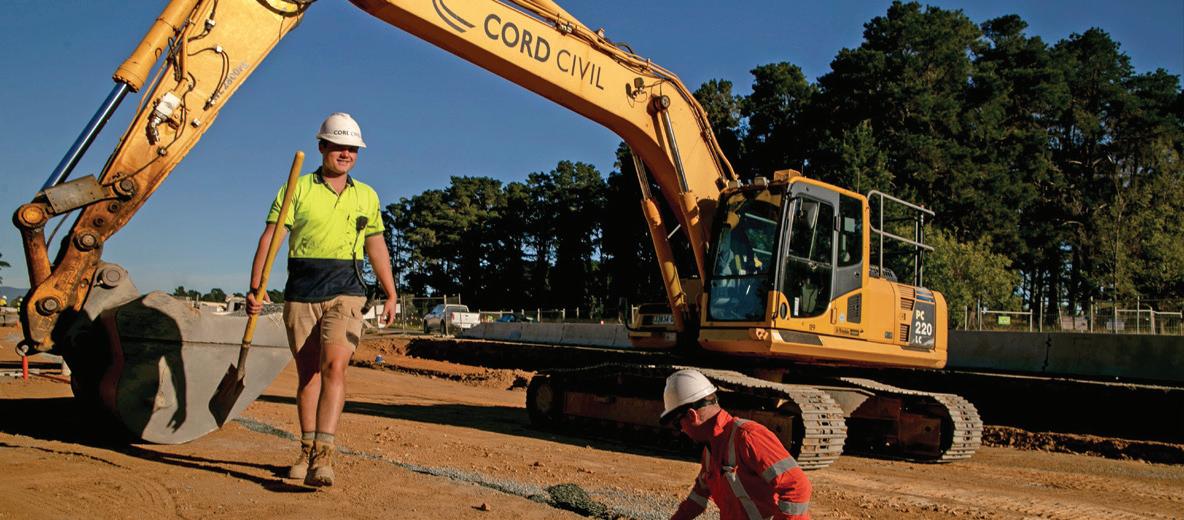
CONTINUING TO MINIMISE CASES
Our support for governments’ adherence to the National Plan takes into account modelling carried out by the Federal Treasury, estimating the direct economic costs of the COVID-19 management strategies modelled by the Doherty Institute.
Treasury did this through analysis of the direct impacts of activity restrictions and lockdowns used to manage the virus and contain outbreaks.
It found that, as vaccination rates rise, significantly less lockdowns and other restrictions will be required to continue to minimise cases of COVID-19, reducing the economic cost of managing the virus.
It also concluded that once 70 per cent of Australian adults aged 16+ are vaccinated, and assuming the spread of COVID-19 is minimised, outbreaks can be contained using only low-level restrictions. Once vaccination rates reach 70 per cent, lockdowns are unlikely to be required, significantly reducing the economic cost of managing COVID-19.
From a compliance perspective, the civil construction sector has adopted a
proactive and responsible approach to dealing with the impacts of COVID-19 over the last 18 months, and we are determined to continue this approach into the future.
Industry’s approach since the outbreak of the pandemic has been critical to supporting jobs and contributing to the economy during these difficult times.
THE CONSTRUCTION INDUSTRY IN 2021
In CCF’s recent report, Rebuilding Australia – A Plan for a Civil Infrastructure Led Recovery, it found that engineering construction activity was relatively insulated from domestic activity restrictions in 2020.
The lack of movement restrictions targeted towards construction workers has allowed pre-existing projects to progress steadily, and civil projects located outside of dense population centres have been geographically shielded from any direct impacts.
However, the report also points out that the industry is not entirely immune to the outbreak of COVID-19. Road engineering construction stalled
more than previously expected in 2020, which was attributed to some productivity losses due to social distancing guidelines and lockdowns, as well as far weaker than expected public works commencements.
CCF continues to reinforce to ministers and bureaucrats that civil worksites such as road and rail projects are typically very large and therefore workers can operate at safe and appropriate distances from one another.
Because of this, civil construction worksites have adjusted to the compliance requirements imposed on them by state and territory governments.
The proactive and responsible approach taken by industry in dealing with the impacts of COVID-19 through appropriate mitigation measures is consistent with the expectation of governments.
In return, industry expects governments to honour the spirit and letter of the National Plan to enable businesses to operate in a safe and responsible manner when vaccination targets are met.
www.infrastructuremagazine.com.au November 2021 // Issue 21 21 INDUSTRY INSIGHTS
The Civil Contractors Federation is the peak national representative body for the Australian civil construction industry, comprising over 1,900 civil construction companies across the construction supply chain.

THE WIDENING
GENDER PAY GAP
IN CONSTRUCTION
22 INDUSTRY INSIGHTS
 Hby Kristine Scheul, National Chair, the National Association of Women in Construction (NAWIC)
Hby Kristine Scheul, National Chair, the National Association of Women in Construction (NAWIC)
In September, NAWIC proudly hosted its first National Forum which discussed solutions to the decreasing number of women entering and staying in the construction industry.
osted by the ABC’s Bright Ideas presenter, Paul Barclay, the forum discussion was based on ‘Finishing the unfinished business of abolishing gender bias from the Australian construction industry’.
I was personally honoured to be in the company of the panellists who were selected to contribute to this conversation – Dr Niki Vincent, Victorian Commissioner for Gender Equality, Professor Paula Gerber, and Andre Noonan, Acciona Geotech’s COO.
For NAWIC, this forum was the first step in a planned strategy that aims to bring together industry, government and most importantly, female stakeholders, to bring their collective thinking to solving one long-term problem at a time until gender equality throughout the industry has been achieved.
The number of barriers to attracting and retaining more women are well documented, but after 25 years of supporting the advancement of women in the construction industry, it is high time we collectively start promoting some solutions. I hope that forums such as this one will contribute to the solution and begin to create real change.
CONSTRUCTION HAS THE SECOND HIGHEST RANKING GENDER PAY GAP
One of the most prominent issues is that of the gender pay gap in the construction industry, which sadly, is continuously widening.
In Australia, Equal Pay Day is a date representing the additional days a female must work to earn the same amount as a male colleague. In 2021, this was 61 days, three more days than last year.
For women in Australia’s construction industry however, the gap is much wider, the second highest in Australia in fact, at 26.1 per cent, with women earning on average $36,361 p.a less*.
Essentially that means for many women working in construction, we must work at least another month before we catch up with our male colleagues. And like the national pay gap, the gap in construction is also widening – up one per cent from the year before.
So, what is it about the construction industry that causes it to have the second highest ranking gender pay gap and for that trend to go backwards instead of forwards?
Firstly, it is important to recognise that the gender pay gap is not the same as equal pay. Equal pay for equal work was enshrined in the Fair Work Act 2009 making it illegal to not provide equal pay to employees performing work of equal or comparable value. The gender pay gap is not just about equal wages, it measures women’s economic position compared with that of men, or more to the point, it measures the impact of both conscious and unconscious gender discrimination in the workforce.
For the construction industry, some reasons for the gap include discrimination in hiring, starting salaries, promotions and pay rises; undervaluing women’s competencies; the motherhood penalty impacting career progression and lack of workplace flexibility to accommodate caring and other responsibilities.
It is little wonder that the industry is finding it challenging to recruit women, and even if they do, having them stay. Why would women want to stay in an industry where it appears they are not valued as highly as their male colleagues?
ADVOCATE FOR CHANGE
Through the development of our Strategic Plan, NAWIC is seeking to break down why our industry is finding it so difficult to increase the number of women participating in the industry, and then assist women and industry to resolve those issues holding them back.
We recognise that in most instances, the discrimination experienced by women is not intentional, but equally, not actively seeking to do something about it has the same effect.
However, recognising that there is an issue in the construction industry is one thing, actively working out what to do about it is another. Through the forum’s ongoing discussion, we not only want to identify what the specific barriers are to the construction industry, but we also want to solve them, in turn creating an industry where women get to fully participate and achieve recognition of their value.
NAWIC now plans to leverage the outcomes of the discussion, advocate for the changes necessary, and work with each of the participants, whether on the panel or listening in, about what to do next.
At the very least, we want to see a change in the WGEA scorecard on the gender pay gap. At a minimum, it will be a positive step towards achieving our goal of 25 per cent women in construction by 2025.
*ABS Statistics.
Additional figures from Workplace Gender Equality Agency’s Gender Equality Scorecard
The scorecard is an analysis of information collected from its own annual census of participating companies. The report card, released in November 2020, calculated the average gender pay gap across all industries from participating companies who have more than 100 employees.
Last year, the scorecard revealed an average gender pay gap for base salaries of 15 per cent across private sector industries. That increased to 20.1 per cent if the calculation was based on total remuneration packages, which included bonuses, commissions and other entitlements.
www.infrastructuremagazine.com.au November 2021 // Issue 21
23 INDUSTRY INSIGHTS
HOW SMART BUILDINGS AND SMART GRIDS WORK TOGETHER TO REDUCE THE CARBON FOOTPRINT

Building and construction activities are a major cause of carbon emissions. According to the Global Status Report, building and construction combined account for 36 per cent of global final energy use and 39 per cent of energyrelated carbon dioxide (CO2) emissions when upstream power generation is included.

For some time, businesses and governments have worked to reduce the impact of the built environment. For example, the Federal Government introduced the National Australian Built Environment Rating System (NABERS) more than 20 years ago – a national rating system that measures the environmental performance of buildings, measuring energy efficiency, water usage, waste management and the indoor environment quality of a building or tenancy and its impact on the environment.
GREATER OPPORTUNITIES TO DECARBONISE
Andrew McCluskey, Siemens Australia’s Country Business Unit Head for Smart Infrastructure Regional Solutions & Service, said that the digitalisation of energy and smart building technology is offering building owners greater opportunities to decarbonise. Integrated hardware and software are providing building operators better opportunities to see what is happening internally, and interact with the energy systems they are connected to in new ways.
“Siemens is also implementing its own decarbonisation strategy with a commitment to become carbon neutral by 2030,” Mr McCluskey said.
“This involves several key concepts around the changing low carbon and energy efficient landscape, and how the grid and smart buildings are starting to work together in new, connected ways.”
SUSTAINABLE URBAN PRECINCTS PROGRAM
Siemens played an instrumental role in the ambitious sustainability program undertaken by RMIT, to reduce its energy and water use and carbon emissions by 25 per cent. The $128 million program started in 2014 and at the time was the largest Sustainable Urban Precincts Program in the Southern Hemisphere.
The program was implemented across RMIT’s three Melbourne campuses, with Siemens responsible for the City Campus, which is made up of 90 buildings across two city blocks.
The project’s aim was to reduce electricity use over eight years by an estimated 239 million kW, which is enough electricity to power 7,000 houses for six years. This is equivalent to a 30,000 tonne reduction in greenhouse gas emissions – the same as planting an area the size of Melbourne CBD with 128,000 trees annually.
The program replaced 2,000 fixtures and had a target to reduce water use by an estimated 68 million litres. Impressively, the targets were achieved four years ahead of schedule.
As part of the project, a Distributed Energy System was implemented, encompassing new HV infrastructure as well as two cogeneration systems. Also included was Siemens’ building management system (Desigo) and Siemens software to monitor and analyse energy consumption and savings.
Siemens likes to call the way forward the ‘grid interactive’ building which incorporates newer and smarter technologies.
THREE STAGES TO BECOMING A GRID INTERACTIVE BUILDING
From Siemens’ perspective there are three stages a company can take to become a grid interactive building:
1. Load management: this is where all electricity loads within a building’s footprint are managed whilst using automation and enhanced algorithms to predict or suggest more energy efficient actions
2. Optimisation within the building or campus: this is bringing together a portfolio of many buildings to have a centralised management view, which in turn leads to better decision making
3. Demand flexibility: this is about understanding the total loads along with internal patterns and needs, and once understood, it can start looking at a future where it interacts and optimises the grid at a building level
It is clear the building sector has the potential for significant improvement. Vital to this is expert support from specialist companies that understand buildings; so it can prioritise the right actions across the business and manage the risks around project implementation, performance and finance.
November 2021 // Issue 21 www.infrastructuremagazine.com.au
24 INDUSTRY INSIGHTS // SPONSORED EDITORIAL
For more information, go to siemens.com.au

NO PULL START NO MIXING PETROL & OIL NO ENGINE MAINTENANCE BOOK NOW AVAILABLE AT A UTHORISED A GENT BOOK A TEST DRIVE WITH A MILWAUKEE SPECIALIST ARN-1932
SHARED 2032 OLYMPIC GAMES DREAM –
LONG-TERM LEGACY REQUIRES GENUINE COLLABORATION

26 INDUSTRY INSIGHTS
 Tby Priscilla Radice, CEO, Infrastructure Association of
Tby Priscilla Radice, CEO, Infrastructure Association of
The 2032 Olympic and Paralympic Games are a once-ina-century opportunity for Queensland and are strongly supported by the infrastructure industry.
he Infrastructure Association of Queensland Inc (IAQ) recognises the coordinated effort to achieve the successful bid and the tremendous effort ahead to deliver the best Games for athletes, spectators and respondents, while delivering on legacy.
South East Queensland has the longest delivery runway of any Games, but we cannot afford to be complacent and squander this time advantage.
Aside from the tremendous benefits that will flow from the event itself, the Games are the catalyst needed to activate planning and delivery of the critical infrastructure our growing state needs to stay connected and maintain equitable living in the 21st century and beyond.
Leadership, cohesion, ambition and a united vision will be key to success over the eleven-year journey, and industry involvement will help create a united delivery and legacy-focused team with a nonpartisan focus. The private sector will contribute to, and enable, more innovation and greater funding.
PLANNING FOR BEYOND THE GAMES
We need to be bold in our thinking with a focus on 2052, not just 2032! The Games can act as a significant springboard to deliver sustainable, affordable, and inclusive connectivity to all Queenslanders.
IAQ is advocating for the creation of ambitious targets beyond 2032 and mapping out how the Games will help deliver foundational infrastructure for the needs of all Queenslanders in areas like energy, water, mobility, digital, health and education.
The 2032 Games are not the end goal, they are a positive catalyst to galvanise action and bring people together to act collectively. Society can rally around this global sporting event – an extraordinary event that brings out the very best in people.
The Games is also a transformational catalyst for all three levels of government to collaborate on an agreed program and governance framework for ten years, hand in hand with the private sector.
Leaders acting collectively to genuinely collaborate and agree to a long term plan might be the greatest legacy of all. In turn, this transparency and agreed vision will build business confidence, attract significant new investment, boost economic productivity, enhance our global brand and bring more investors and visitors to the whole of Queensland.
Queensland has all the essential ingredients to lead the way into a new future globally, building a green sustainable economy that supports thriving communities.
The changes to the International Olympic Committee’s (IOC) approach means we can plan and deliver longterm development needed for a growing South East Queensland, not just specifically for the Games.
Delivering for growth is a critical factor, and recent modelling by the Austrian Institute of Economic Research highlights it’s the investment in the infrastructure, especially connectivity infrastructure like transport and digital, that drives the biggest economic boost.
COLLABORATION WITH INDUSTRY
IAQ supports a targeted dialogue and planning process which confirms infrastructure priorities that are aligned with the state's long-term planning and allows us to think big and act fast.
By involving industry, we can embrace multiple contributions to deliver outstanding outcomes for all involved, working collectively to draw upon experience and find new ways to deliver the Games safer, faster, at a lower cost, more sustainably, and with liveability and legacy at its heart.
The challenges of sourcing the workers with the skills and capacity to deliver cannot be underestimated. Joined up strategic workforce planning focused on the health and wellbeing of workers needs to start now.
IAQ’s view is that legacy will be achieved if Queensland sets ambitious targets, and we hold ourselves to account for delivering on them, beyond the Games themselves. For example, the Games gives us the ability to trigger the delivery of critical infrastructure ahead of population growth and shift the dial
towards a clean and green economy such as:
♦ 45 minute SEQ – public and active transport infrastructure to enable quicker connectivity and improved liveability, including faster interregional passenger rail to integrate with the existing Cross River Rail and Brisbane Metro projects
♦ Whole-of-system energy and water grid planning that leverages technologies and is planned in conjunction with major changes and risks such as future of mobility shifts and climate change
♦ Appropriate, accessible and sustainable accommodation solutions, delivering innovative facilities and funding models which can help deliver affordable housing for every Queenslander
♦ Equitable and globally competitive access to telecommunications and data infrastructure, following on from recent critical work such as the Sunshine Coast International Broadband Submarine Cable
♦ Improved health outcomes with competition venues and programs as identified by government, which will support an active and healthy Queensland for many generations to come
♦ Sustainable placemaking and community activation opportunities
♦ Accelerating digital take up and designing a delivery model that supports a sustainable and diverse infrastructure industry to ensure we can deliver value for money outcomes
♦ Leveraging the long-term pipeline certainty to build skills and capacity, diversify the industry and attract new talent such as female participation and overseas skilled migrants
♦ Embedding Circular Economy principles
♦ Catalysing investment and innovation in the manufacturing sector
Working together is key to a successful outcome – we have a deadline, and the eyes of the world are watching. Let’s think big and go for Gold!
www.infrastructuremagazine.com.au November 2021 // Issue 21
Queensland Inc (IAQ) 27 INDUSTRY INSIGHTS
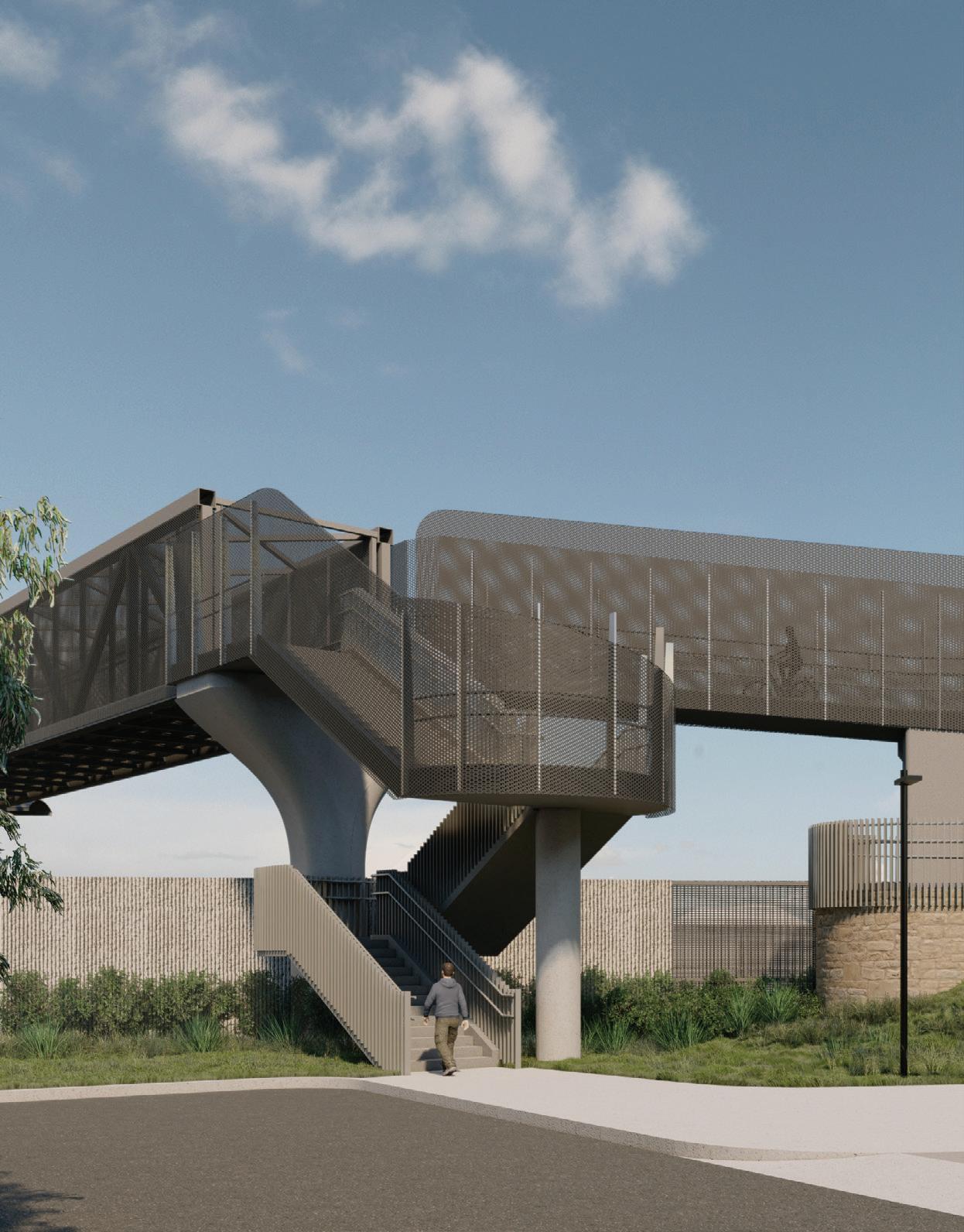
BUILDING THE LONG-AWAITED MELBOURNE AIRPORT RAIL
November 2021 // Issue 21 www.infrastructuremagazine.com.au 28 RAIL
Melbourne Airport Rail will provide much more than just a new rail link to Melbourne Airport, with other upgrades proposed including a new, accessible shared-use overpass over the rail line in Sunshine North.
The
much talked about Melbourne Airport Rail project is becoming a reality, with progress being made towards making future travel to and from Melbourne Airport that much easier.
The project has been decades in the making. In fact, planning for a rail connection to the airport predates the construction of Melbourne Airport itself in 1970.
By the end of this decade, there will be a rail connection to Melbourne Airport for the first time.
The project involves laying around 13km of track between Melbourne Airport and Sunshine Station in Melbourne’s west, and adjacent to the existing Albion-Jacana freight corridor. A new rail bridge to cross the Maribyrnong River will be built alongside the existing heritage bridge.
A series of new above-ground structures will include elevated viaducts and shared use overpasses. Substations will also be built to provide the extra power for trains that will run on the line. There will also be structural
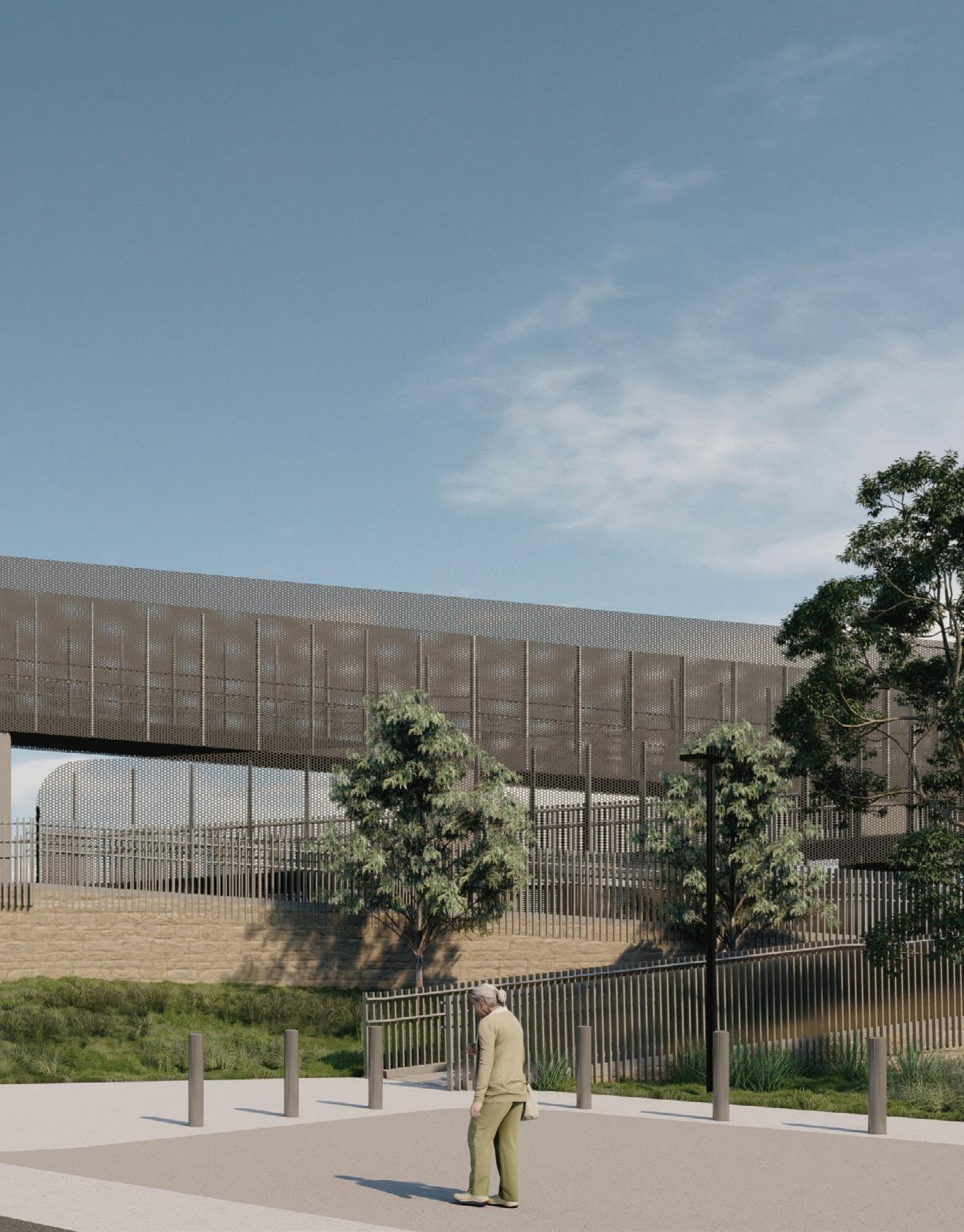
modifications and strengthening works at Calder Freeway, Fullarton Road, Western Ring Road, Keilor Park Drive and McIntyre Road.
Noise walls, signalling equipment and overhead line equipment will be installed along the route.
After reaching Sunshine, Melbourne Airport Rail will connect into the heart of Melbourne’s CBD via the new Metro Tunnel.
Rail Projects Victoria’s Ben Ryan, the Project Director for Melbourne Airport Rail, said the route was chosen for its far-reaching connectivity benefits for the metro, regional and Melbourne Airport trains that will pass through Sunshine Station for all travellers.
“The Sunshine route will provide superior connections to more areas of Melbourne compared with other options assessed, through its integration with the Metro Tunnel and an upgraded Sunshine interchange,” Mr Ryan said.
“Among a number of other benefits, it also allows us to deliver the project to Victorians earlier.”
In 2018, it was predicted that 67 million passengers would travel through Melbourne Airport by 2038. Melbourne Airport Rail aims to both cater to this demand and reduce congestion on roads towards the airport.
Planning and delivery of Melbourne Airport Rail is being overseen by Rail Projects Victoria (RPV), which is also assisting in the delivery of other major rail infrastructure projects such as the Metro Tunnel, Sunbury Line Upgrade, Regional Rail Revival and Geelong Fast Rail.
Melbourne Airport Rail is being made a reality through a joint commitment from the Federal and Victorian Governments, each contributing $5 billion towards the project for a total of $10 billion committed funding.
www.infrastructuremagazine.com.au November 2021 // Issue 21 29 RAIL
TURN-UP-AND-GO SERVICE AND OTHER BENEFITS
When operational, Melbourne Airport Rail will provide a ‘turn-up-and-go’ style service, enabling trains every ten minutes, with a journey to Melbourne’s CBD taking around 30 minutes.
With links into the new Metro Tunnel, direct airport access will be provided to 30 stations, including Sunshine, Footscray, the five new underground Metro Tunnel stations, and stations along the Cranbourne and Pakenham lines in Melbourne’s south-east.
The project will also integrate into the broader metro and regional rail network across the state. Across Victoria, most commuters – even those in regional areas – will need to make only one interchange during their trip to or from the airport.
“By using the Metro Tunnel infrastructure and the Sunshine route, we can connect the airport to key employment areas across metropolitan Melbourne and regional Victoria, either directly or with only one interchange,” Mr Ryan said.
Travellers will also benefit from the use of the new fleet of High-Capacity Metro Trains (HCMTs) on Melbourne Airport Rail. These HCMTs have more carriages, better accessibility features, more hand-holds and more space than other models currently on Melbourne’s metropolitan train network.
Although the rail link itself is the focal point of Melbourne Airport Rail, Mr Ryan said there are other benefits included in the project scope.
“We’re also making major improvements to Sunshine Station, such as a second concourse with better accessibility features, escalators and lifts,” Mr Ryan said.
The combination of the Metro Tunnel, Airport Rail and Geelong Fast Rail will deliver a 'turn-up-and-go-style' service for Sunshine and easy connections to Victoria’s western regions, Southern Cross via Footscray and Melbourne’s CBD through the Metro Tunnel.
The project will also provide new or upgraded pedestrian and cycling connections, and other rail infrastructure upgrades such as new signalling and power systems along the route.
In the short-term, there will also be support for up to 8,000 direct and indirect jobs during Melbourne Airport Rail’s construction, including engineers and planners, construction workers, and local suppliers who will help shape the project.
PROGRESS TO DATE AND CONTRACTS TO CONFIRM
Engagement with the community and key stakeholders has been a continuous process, helping refine the project’s scope, design and planning approvals.
Mr Ryan said there has been a significant response from the community to date surrounding the project.
“Overall, lots of people are happy that the project is on its way – more than 90 per cent of people agreed or strongly agreed that the project will benefit the broader Victorian community,” Mr Ryan said.
“But the people who live and work along the corridor care a lot about their communities, so we have received, and continue to receive, a lot of important local feedback on what they value about their communities.
“Since late 2020, more than 3,000 people have visited our virtual engagement room and we’ve had in excess of 2,500 responses to surveys.”
The COVID-19 pandemic has changed the way the project team performed these community engagements. But the team adapted to conduct engagement both online and face-to-face, subject to the COVID-19 health advice at the time.
In early 2021, concept designs for an elevated rail bridge over the Maribyrnong River and elevated twin tracks between Sunshine and the Albion Junction were released by the Victorian Government (seen in Infrastructure magazine, Issue 19).
The extensive community response has continued as the local community was once again consulted for feedback on concept designs at key locations along the route – including Sunshine Station, Albion, the Maribyrnong River, and the Western Ring Road.
“With every engagement with the community, we get a better idea of their needs, their ideas and potential concerns that they may have,” Mr Ryan said.
Project designs will be finalised once contracts have been signed to deliver the works. A multi-stage procurement process is ongoing within the market to determine the project’s construction partners.
A concept image of proposed upgrades to Sunshine Station as part of Melbourne Airport Rail, including a new, accessible second concourse for better connectivity.

November 2021 // Issue 21 www.infrastructuremagazine.com.au 30 RAIL
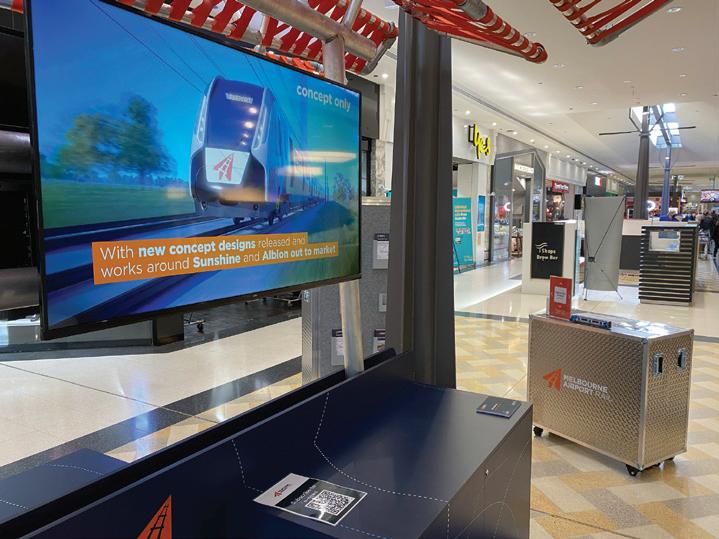
The works for Melbourne Airport Rail have been divided into several packages, providing opportunities for different contractors to deliver different sections of the project. While the project team continues to refine the scope and timing of each of these packages, the
broader construction industry shares the community’s excitement.
“Through our earlier registrations of interest, more than 100 local and global organisations across Australia put their hand up and registered interest in potentially delivering Melbourne Airport Rail,” Mr Ryan said.
“We’re now progressively working through the procurement process, to narrow down a contractor or group of contractors that we believe will deliver the best outcome for each respective package of works.”
The procurement process will continue as contracts are progressively awarded.
WHERE TO NEXT?
The approval process is taking place at both State and Commonwealth levels, as land around Melbourne Airport is Commonwealth-owned.
Detailed planning and development work is also continuing as the project works through all the necessary approvals needed before getting shovels in the ground.
Once all necessary approvals are in place, the project plans to begin construction next year, and to have passengers boarding Melbourne Airport Rail trains in 2029.
“Melbourne Airport Rail isn’t being built for the short term, it’s being built to service travellers for many decades to come,” Mr Ryan said.
“We’re proud to be delivering such a long-awaited project for the people of Victoria and shaping the state’s future.”


www.infrastructuremagazine.com.au November 2021 // Issue 21
31 RAIL
The Melbourne Airport Rail team has had to adapt in engaging with the community due to COVID-19. Here is an in-person setup at Sunshine Marketplace in July 2021, when restrictions allowed this.
INCLUSIVE DESIGN OF PUBLIC INFORMATION SYSTEMS
Technology systems integration company, tm stagetec systems, is showcasing the latest inclusive design developments for Public Information Display. It starts with the Smart pi ECOsystem, a fully integrated Smart Public Information environment across public spaces and transportation hubs of all sizes.
The focus of inclusive design is on dissemination of public information easily and clearly to people that may be hearing or visually impaired. Inclusive design in terms of the ECOsystem is to deliver the same content in multiple ways, allowing people to self-select the way that is simplest and most effective for them to receive it.
The ECOsystem includes the Smart pi EYE (Digital Information/Signage System), offering:
♦ Real time text and the ability to convert any live audio into text with Google AI
♦ Customisable templates to show real time information and overlay real time text announcements for a preconfigured amount of time
♦ Integrated with Smart pi DVA with linked metadata
♦ Show Hearing Loop logo on screens whilst announcements are playing


♦ Designed to select different accents, languages and pronunciations
The Smart pi DVA, DSP and MIC into the ECOsystem will also allow for:
♦ Smart pi NAM field hearing loop amplifier with delay and looped announcements
♦ The addition of metadata to display content of pre-recorded messages
♦ Multilingual support (announced in multiple languages)
♦ Speech to text (multiple languages and voices available from all leading providers)
The benefits of the inclusive design within the Smart pi ECOsystem are to help all people, especially those with impairments, to live and move throughout society as they choose.
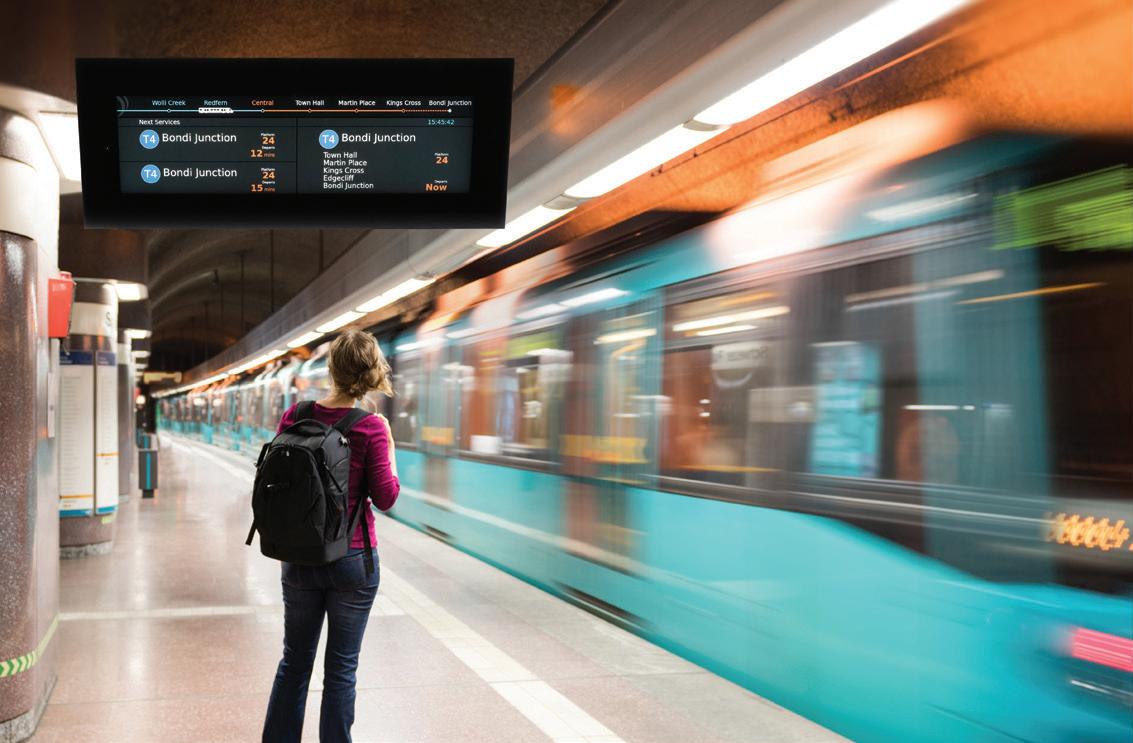
November 2021 // Issue 21 www.infrastructuremagazine.com.au
Help Information
Audio PA Systems
Points
32 RAIL // SPONSORED EDITORIAL

New STRAILastic_mSW 730
mini soundprotection wall with high absorbing surface
The new version of the STRAILastic_mSW adds a higher wall to the product range. This version is used for train speeds of up to 120 km/h.
Benefits at a glance
¬ No foundation required for installation
¬ easy and quick installation
¬ Short delivery times > noise hot spots can be supplied with products quickly
¬ Closer to the noise source than any other sound protection
¬ Break-proof due to bre-reinforced rubber compound with a cover layer of virgin rubber > UV and ozone resistant
¬ No material fatigue caused by vibrations or pressure and suction forces
¬ No problems with oversized loads
STRAILastic - sound protection

Due to the higher design, it gains even more e ect in the area of the wheel.
STRAILastic_mSW 730 is fastened to both rails with an insulated, decoupled substructure or directly in the subsoil using ground screws.
STRAILastic_mSW 730 > mini goes maxi.
1. STRAILastic_mSW 730 new version of the mini sound protection wall
2. STRAILastic_IP the infill panel
3. STRAILastic_mSW the established mini sound protection wall 4. STRAILastic_A inox 2.0 rail dampers




STRAILastic Australia Pty Ltd // STRAILastic track damping systems 350 Botany Road | Beaconsfield NSW 2015 Sydney | www.strailastic.com.au
4 products - 1 result - silence More information can be found at www.strailastic.com.au 1. 2. 3. 4.
THE PROCUREMENT REFORM NEEDED FOR RAIL CONSTRUCTION
 by Caroline Wilkie, Chief Executive Officer, Australasian Railway Association (ARA)
by Caroline Wilkie, Chief Executive Officer, Australasian Railway Association (ARA)
The release of the ARA’s Rail Supply Chain Blueprint recently included a strong focus on procurement as one of its key themes.
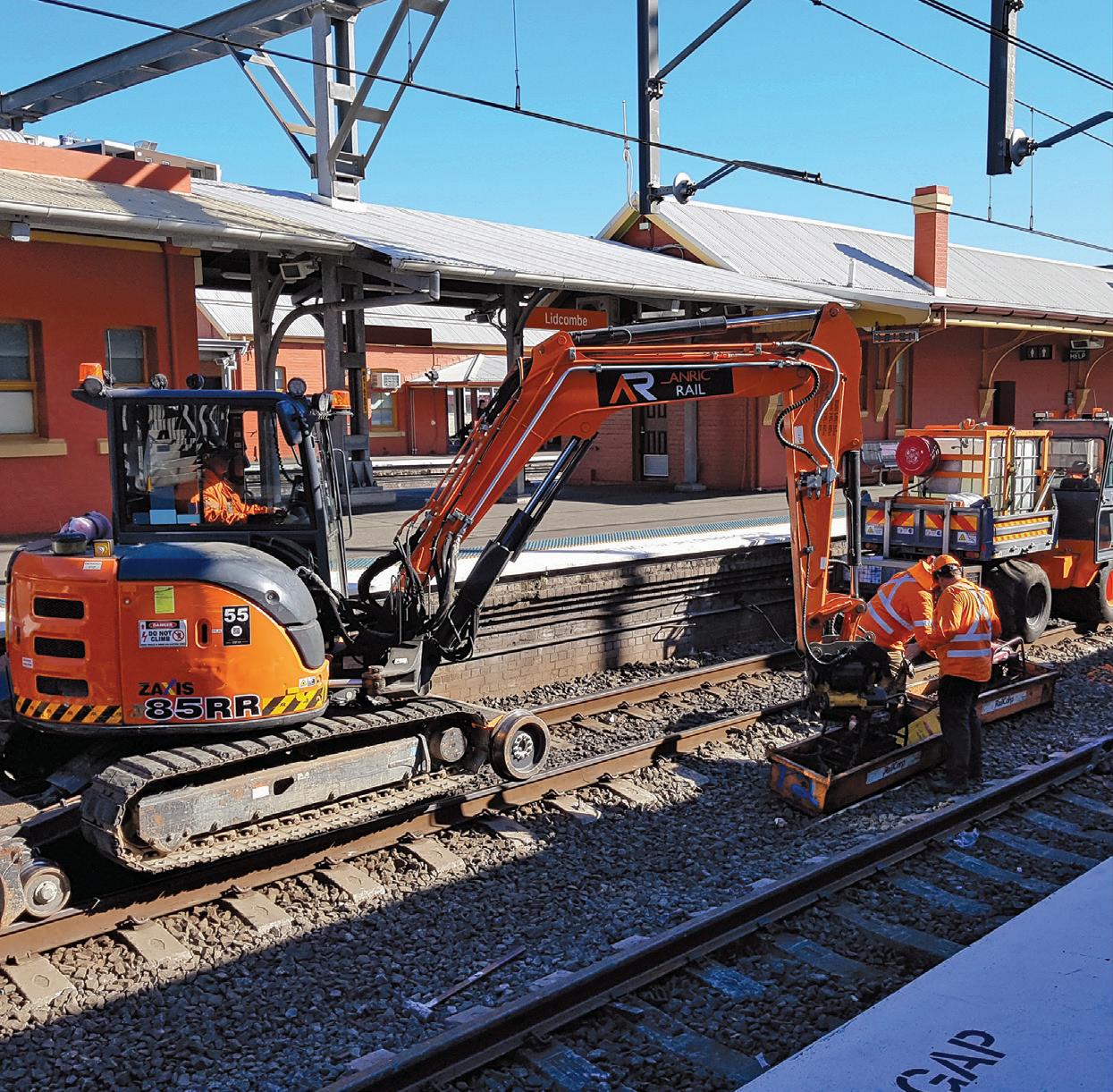
34 RAIL
Procurement challenges emanating from the legacy of the rail industry’s pre-Federation origins are well known and complex to solve. Each state has their own systems and procedures, making it difficult for organisations to standardise product delivery across multiple jurisdictions. This results in suppliers creating bespoke solutions across borders, making it harder to achieve economies of scale or innovate and grow.
For example, wheel sets have a different set of requirements in each state. Different components are used in NSW and Queensland, which also run on different systems compared to Victoria. A national approach to this issue would see the industry working to the same standards and requirements across borders, making the entire process more efficient, from manufacturing to maintenance. The cost savings to suppliers and clients would boost the entire sector and assist with growth.
As the industry prepares for another wave of growth, a more consistent approach is needed to reduce the relatively high costs of tendering in Australia, which can be as much as four times the global benchmark of 0.5 per cent of project costs. Reducing tendering costs would deliver multiple benefits, from increasing competitiveness to expediting project delivery.
A parliamentary inquiry is currently underway to examine how to improve procurement practices across governmentfunded infrastructure and the ARA welcomes its consideration of this important issue.
STANDARDISING TERMS AND CONDITIONS
There are several key areas the ARA would like to see highlighted in procurement reform.
Harmonising pre-qualification processes can save time and money, as a result of reducing duplication. Presently, businesses are required to demonstrate capacity and capability each time they submit a tender. The ARA proposes, and is currently investigating, a national pre-qualification system to streamline accreditation and certification information across all tenders.
When tendering, contractors would confirm no material changes have occurred since registration, which removes costs and time from the procurement process.
Standardised terms and conditions can also reduce administration during the tender process. Both clients and organisations spend hundreds of hours negotiating special conditions, which detracts from the intent and benefits of standard contracts. Consistent generic terms and conditions would save time across every step of the supply chain.
RISK MITIGATION AND INNOVATION
The nature of infrastructure projects is that inevitably, despite best efforts, issues will arise. The ARA proposes a risk mitigation model for all contracts, so smaller contractors are protected and able to bid for large projects that are not split into bite-sized contracts. At present, risk is not fairly allocated to those who can appropriately manage risk, based on responsibility, knowledge, or authority.
Innovation is a critical part of our future to drive sustainability and technological development in Australia. As technically advanced as the rail industry is, the ARA’s research has confirmed that innovation, research and development in Australia is lagging our global counterparts.
A strong national rail innovation culture could be supported by a national type approval process to mutually recognise type-approved products across jurisdictions, and establish a transparent national register of type-approved products.
The ARA has worked closely with industry to provide clear guidance for achieving these goals in partnership with government.
IMPROVING THE PROCUREMENT PROCESS
We released the Best Practice Principles for Rail Construction Procurement and a Best Practice Guide to Rollingstock and Signalling Tendering in 2020 to advocate for these improvements, and have been engaging with government and industry to progress these issues since that time.
As part of this process, we have developed a traffic light report to understand the adoption of these principles and opportunities across Australia. We continue to consult with state transport and infrastructure agencies on these issues, and have established a National Procurement Working Group to work collaboratively to progress these initiatives.
Developing a sustainable rail construction industry is critical to delivering the rail infrastructure pipeline and boosting our economy. The industry needs greater national coordination to drive innovation, maximise investment and reduce duplication so we can streamline project flows, from planning to construction.
While these issues are complex, they can be solved. Importantly, improving the procurement process benefits all of us, allowing industry to innovate, grow and prosper, driving efficiencies for government agencies and clients, and delivering sustainable infrastructure that meets community needs – now and for the long term.

35 RAIL
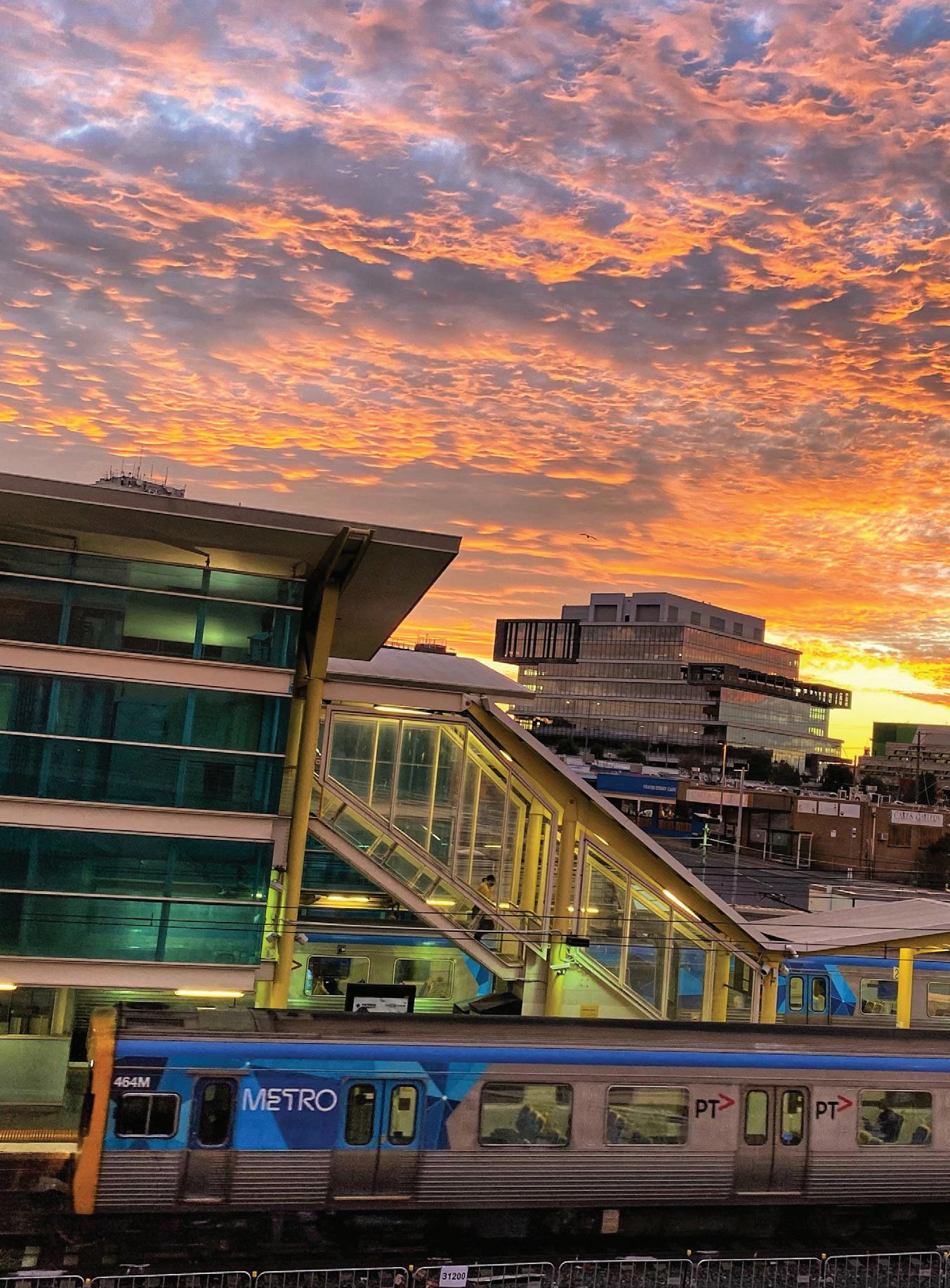
THE CHANGING FACE OF R AIL
 by Catherine Baxter, Chief Operating Officer, Metro Trains Melbourne, and Chief Executive Officer, Metro Academy
by Catherine Baxter, Chief Operating Officer, Metro Trains Melbourne, and Chief Executive Officer, Metro Academy
When I was young and wanting to find my place in the world, my father suggested to me that I should think about a career in the railways.
RAIL 36
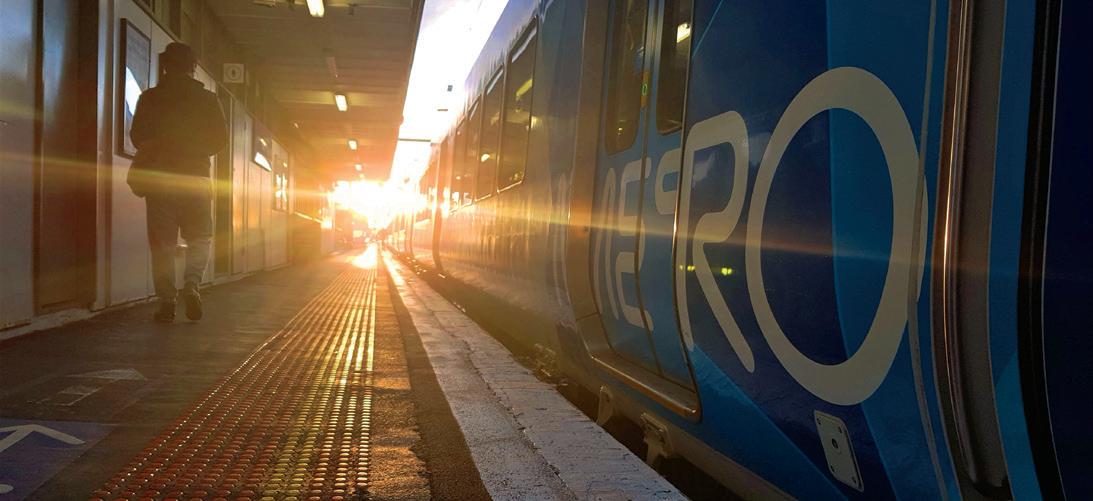
Back in the late 1980s, rail was traditionally a maledominated sector, laden with sexist workplace clichés. Put simply, it was a tough environment for women to prosper.
Despite this, I was determined to follow my family’s long and successful history in the railways. My father and two of my uncles spent their entire working lives in rail – my brother dedicated half of his career to the industry too.
You could say that the railway is a family business and it’s ‘in my blood’, so I took my father’s advice and joined Queensland Rail.
Those early years weren’t easy, but three decades on I am so glad I listened to him, and I haven’t looked back.
Today I am proud to be the Chief Operating Officer at Metro Trains Melbourne and Chief Executive Officer of the Metro Academy. It is my job to oversee the safe running of our network, and the delivery of nationally-recognised rail safety training.
METRO’S AMBITIOUS TARGET
I’m pleased to say that the stereotype that rail is a ‘maledominated industry’ is changing – and changing fast.
I’ve always pushed hard to ensure more women are given equal opportunities to join the rail industry. I have personally spent a great deal of time mentoring women to help them achieve career advancement in the railways.
Women no longer need to settle for a ‘junior job’ in rail. Today they can pursue meaningful careers and make a real difference in our industry and community.
At Metro, I oversee 3,500 hardworking people in an organisation of more than 6,500.
I’m very proud that every day Metro continues to better reflect the values of the community we serve. That means ensuring women are working at all levels, in all types of roles.
I can assure you that we’re not just ticking boxes.
Bringing more women into Metro improves both our business and the city of Melbourne. Hiring new people from diverse parts of the Victorian community, who previously didn’t have a seat at the table, means more women have an opportunity to develop a career in our industry than ever before.
I can honestly say there has never been a better time for women to build a career at Metro, and in the railways more
broadly. In 2009, there were 26 female drivers working for Metro – and today there are 348. That is more than a 1,300 per cent increase!
In 2020, women made up 82 per cent of our new station recruits, 70 per cent of our new train drivers, 63 per cent of our new signalling employees, and 93 per cent of our new authorised officers.
Today, 27 per cent of the Metro workforce is female, compared to just 12 per cent when the Metro franchise started in November 2009.
We have committed to a target of 40 per cent of our workforce being women by 2027. It is an ambitious target –and we are committed to not only reaching it but exceeding it.
IT STARTS AT THE TOP
We are also committed to employing more women in senior leadership roles. Today, the General Manager of Passenger Experience, the Head of Stations, the Head of Metrol (the nerve centre of Metro), the Head of Train Services, the Head of Passengers Relations, and the General Manager of OCMS (Metro’s IT nerve centre) are all women.
We continue to ensure women are recognised for their skills and achievements – because it just makes sense.
We want the best people to work with us at Metro, no matter who they are or where they are from. Diverse perspectives and innovative ideas ensure that Metro is a network that values its people, regardless of gender.
When everyone is represented and empowered to be themselves at work, we achieve more. When my father encouraged me to join the railway, it was during a time when women worked in the typing pool, hospitality, or were in very junior administrative roles.
Neither he nor I envisaged that one day I would be responsible for operating a railway in a major capital city of Australia.
It shows what is possible for women in today’s industry, with hard work and dedication.
I urge women to broaden their thinking about joining the rail industry, with its many different, challenging and exciting roles.
I’m so glad I listened to my father’s advice all those years ago. I encourage women to take a chance – because you never know where it might lead.
www.infrastructuremagazine.com.au November 2021 // Issue 21 37 RAIL
SPREADSHEETS
ARE PUTTING YOUR PROJECT AND PORTFOLIO MANAGEMENT AT RISK
by Doug Vincent, Co-founder and CEO, Mastt

There’s no doubt that the entire construction industry – from owners to managers, contractors and suppliers – rely on spreadsheets. However, just because there is a critical mass of users, it doesn’t mean that spreadsheets should be used for the most important aspects of project and portfolio management.
We’ve identified six pitfalls for decision makers that rely on spreadsheets to track contracts, project accounting and more.

1. REPUTATION RISKS – DON’T TELL YOUR CLIENT YOU USE SPREADSHEETS!
A question often asked by clients is: “What systems are you proposing to handle this complicated portfolio of work?” If your answer is spreadsheets, you’re setting yourself up for reputational damage. Nowadays, owners and key decision makers are aware that great software exists. Impress your clients with systems that provide live dashboards, boost productivity and increase transparency – without touching a single spreadsheet.
2. CLIENTS AND EXECUTIVES WANT REAL-TIME DATA –SPREADSHEETS DON’T FACILITATE THIS
Owners and managers want to collect project and portfolio data to ensure decisions are analytical and objective. Spreadsheets fail to make data easily accessible for things like analytics and benchmarking. Organisations that move away from spreadsheets and towards bespoke software systems, unlock the value of this data profoundly.
3. SPREADSHEETS ARE EASY TO BREAK, PUTTING REPORTING AND DECISION MAKING AT RISK
As the data and complexity of spreadsheets grows over the life of a project, the chances of an error increases rapidly. There are just too many calculations that depend on precedent cells. The result is a lack of project controls that can cause
unknown overruns or worse, complete misreporting of cash flows and final forecast costs. Software helps prevent human error with in-built data validation and business rules to stop deviations and inconsistencies immediately.
4. SPREADSHEETS ARE LIKE FLYING BLIND, OFFERING MINIMAL TRANSPARENCY OR VALUE-ADD OPPORTUNITIES FROM SENIOR MANAGERS
Key decision makers have no choice but to trust that the spreadsheet has been quality-assured across every formula and data point. This lack of transparency and inability for key decision makers to properly interrogate data is a significant risk to financial reporting and capital allocation.
With built-for-purpose software, key decision makers can drill down into data, interrogate it for answers, and be confident in their cash allocations.

5. SPREADSHEETS ARE TIME-CONSUMING AND PAINFUL TO MANAGE OR CUSTOMISE
Without proper organisation, building and maintaining overly complicated spreadsheets slows down project management teams.
Get more done with less resources by moving into a bespoke software system that reduces start-up time to zero and automates key PM processes and procedures.
6. SPREADSHEETS LACK SECURITY
Since spreadsheets are commonly shared through email or data storage devices, this puts client data at risk of broad, unintended dissemination. Moving teams off spreadsheets and into audited, secure cloud-based software mitigates the majority of data security risks.
Mastt’s secure cloud-based system makes it easy for PM teams to eliminate the six pitfalls of spreadsheets. Learn more at www.mastt.com or email hello@mastt.com for a free demo.
November 2021 // Issue 21 www.infrastructuremagazine.com.au
38 IoT & CLOUD COMMUNICATION // SPONSORED EDITORIAL
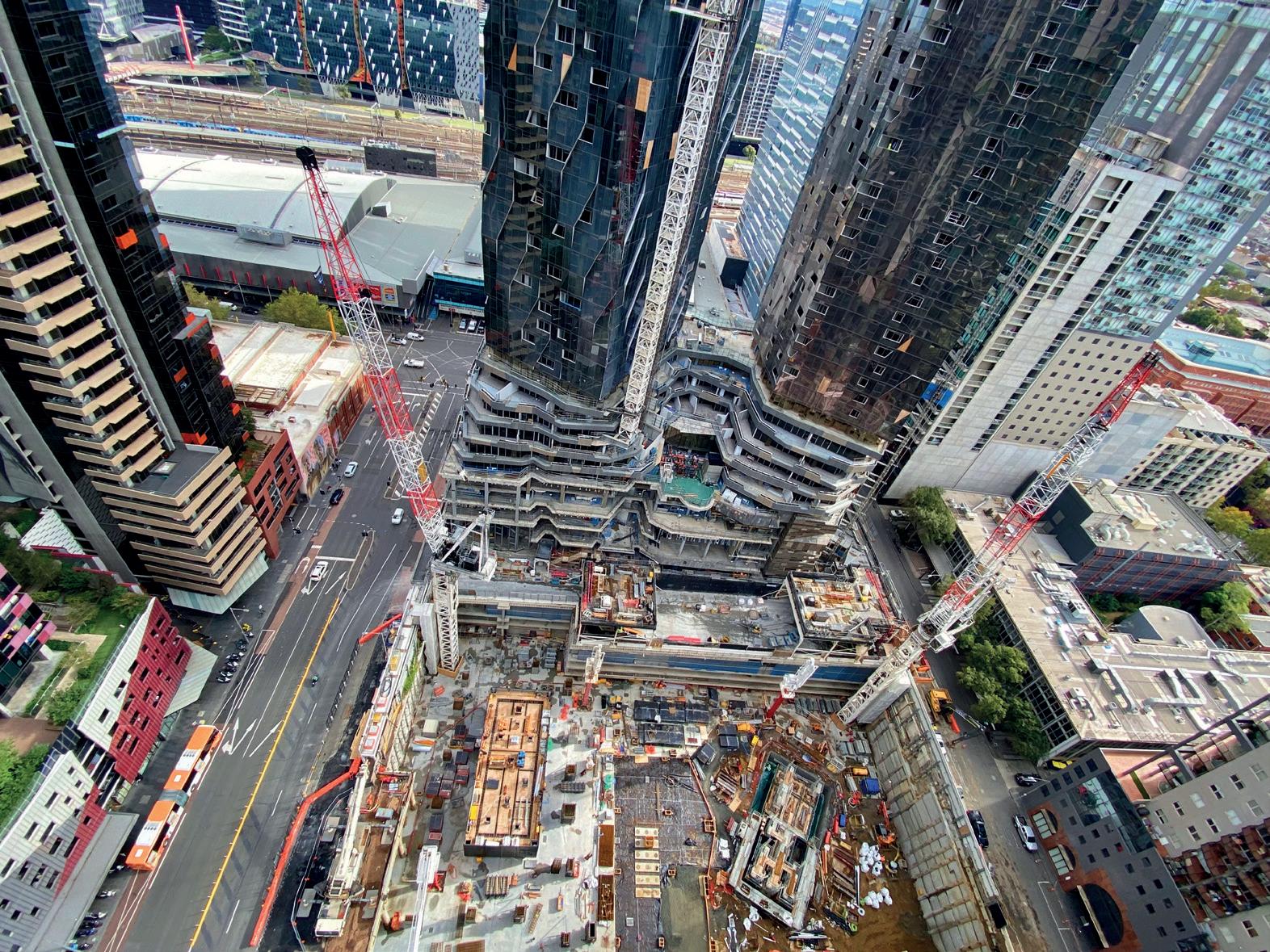








20

THE NEXT GENERATION OF DIGITAL INFRASTRUCTURE
by April Shepherd, Journalist, Infrastructure magazine
The world is changing at a rapid pace, with industries having to consider the critical infrastructure needed to sustain many generations to come. Dr Ian Oppermann, Chief Data Scientist for the NSW Government and Industry Professor at UTS, joined this year's Critical Infrastructure: Digitisation Series program to discuss the new world of digital infrastructure, from 6G and safe data sharing, to all-encompassing IoT networks.
40 IoT & CLOUD COMMUNICATION

41 IoT & CLOUD COMMUNICATION
In his keynote presentation at the Cloud Infrastructure: Opportunities in digital infrastructure Virtual Conference – day two of the Digitisation Series – Dr Oppermann discussed the UN Sustainable Development Goals, outlining a future desirable vision of how the world could look by 2030.
Dr Oppermann is set to meet with the International Standards Community (IEC) to discuss how different standards in electrotechnical and information communications technology will support Australia and other countries to deliver on the UN Sustainable Development Goals. There are 17 goals ranging from ending poverty to clean air, clean water, clean land and smart sustainable cities.
“Smart sustainable cities is one of the goals which is particularly relevant to Australia, because many people are developing their strategies for future infrastructure with 2030 in mind, and then looking, of course, beyond that 2040, 2050,” Dr Oppermann said.
FUTURE 6G MOBILE COMMUNICATIONS BUSINESS ECOSYSTEMS
Dr Oppermann discussed 6G research and development, which is currently underway and being led out of Finland. 6G is targeted for release before 2030, and could help deliver on the UN Sustainable Development Goals. He also highlighted that 6G is not the end of the development of communications technology.
“By 2050, we'll be looking at not 6G, but probably 8G mobile communicators. And of course it continues. Those global trends of aging, urbanising and growing population will continue in the long term. We also know we live with a changing climate, and so where we grow food and where we draw calories from is also changing,” Dr Oppermann said.
“When we think about where we're going, that future world of 6G, it's already starting to look quite different from the world of 2021.
“In fact, it's the data itself which becomes the major focus of networks, moving it around and creating value in many parts of the network. The total percentage of the world energy budget used by data, analytics and telecommunications will almost certainly increase to a point where we really need to start asking the question about whether it's appropriate to spend that much of our global energy budget on communications.”
Dr Oppermann also discussed the way that communications may evolve, to not have a ‘centre’ of the network, with network management and optimisation taking place in a highly localised way. A decentralised network could also assist with potential future privacy concerns.
“Part of the thinking of future materials for 6G is that these will potentially be woven into your shirt, built into your shoes, sprayed onto surfaces or fabricated into building material. Literally everything could communicate with everything else,” Dr Oppermann said.
“But each and every one of those elements of the network also becomes a data source.”
DRONES, DATA SHARING AND PRIVACY
Dr Oppermann touched on what the future of communication infrastructure may look like, using the example of drone technology.
The use of drones is becoming increasingly common. They are being thought about as a means of providing hotspot communications, and possibly supplying communications in high traffic hotspots.

“In the world of standards, there's a lot of work being done right now to ensure that data, AI, electro-technical systems and devices are secure, green, and increasingly interoperable.” 6G will likely not only change the radio spectrum used, but lead to creation of new materials and reduce the overall energy consumption of a network, which as Dr Oppermann explains, will become increasingly high as technology advances and IoT technology moves along.
“At the moment, it's estimated that, for example, data centres around the world consume about two per cent of the world's energy, increasing as more and more data is used to manage, operate, and optimise networks,” Dr Oppermann said.

“A drone may, for example, follow you on your journey to work, the drone may hover above your house all day, carrying out a whole range of different services beyond communications, opening up considerations of privacy and consent in future networks,” Dr Oppermann said.
“A drone is a fairly innocuous example, but increasingly we're interacting with intelligent devices. And increasingly we're relying on intelligent devices to drive productivity and drive that seamless digital experience, and that enhanced
There are expectations that
communications will become the most significant component of the network. As an example, this could be drones operating not in isolation, but in swarms, with many thousands of devices operating in a coordinated fashion.
“For future communications systems, we are stretching that ‘blanket’ of resources in the form of network coverage, capacity, reliability, security and density ever further, and increasingly
42 IoT & CLOUD COMMUNICATION
Dr Ian Oppermann
targeting machines and devices as the recipients and even the creators of that data and creators of those services,” Dr Oppermann said.
BUILDING TRUST IN THE NEW NETWORK
It’s evident already that building trust in networks that control autonomous devices is critical, and will become an ever more important part of this new ecosystem of digital infrastructure as the future progresses.
Trusting networks that control aspects of day-to-day life and networks that hold precious data will be critical as cloud infrastructure and IoT grow.
“If we've got a network which is controlling an autonomous device, and we're relying on that control for that vehicle to behave appropriately, and behave as we expect, we are explicitly trusting the network. In fact, that becomes critical trust in the case of an autonomous vehicle,” Dr Oppermann said.
NSW: A CASE STUDY IN PLANNING FOR A DIGITAL FUTURE
Dr Oppermann said NSW is showing an especially strong focus on digital infrastructure, which is appropriate when considering the state’s future and its own versions of the global trends of an aging urbanising population.
“NSW recently held a smart ‘city’ event, the NSW Smart Places Summit in August, at which NSW announced the Smart Western City Program as well as a 5G strategy and trials. Both the strategy and trials support development of a ‘smart’ city in the area,” Dr Oppermann said.
“These timeframes of 2030 may seem futuristic, it may seem beyond reach, but they're actually baked into people's planning right now, and also being baked into thinking about the communications infrastructure.”
In 2020, NSW released its Smart Places Strategy, integrating communications infrastructure into the strategy, which includes the use of digital twins. Digital twins layer digital engineering models, IoT sensor data, and environmental data into a digital model of the built and natural environment.
“Transport for NSW has created digital twins of smart infrastructure projects. A digital twin is brought to life through the use of a variety of different datasets, to help with the build, the operations, and maintenance of different pieces of physical infrastructure,” Dr Oppermann said.
NSW Spatial Services has created a digital twin of the whole state by linking spatial datasets, creating a whole range of new ways of visualising or exploring NSW through data.
Dr Oppermann explains that as the use of data to understand a community at fine-grained level increases,
security and privacy become more important issues. As part of the Smart Places Strategy, the NSW Department of Planning Infrastructure and Environment is also developing a Customer Charter in consultation with communities. Under the charter, the NSW Government and its agencies will make sure data is collected, managed and stored securely to protect privacy.
NSW also released its AI strategy in 2020, which Dr Oppermann said is again outcome-focused.
“We want to improve productivity, we want to improve the quality of life for people in NSW, but we need to do so in a way which ensures transparency, is open, and is fair and demonstrates trustworthy and appropriate use of AI.
“Ultimately smart cities and AI are really cases of data sharing. So data is the big game.”
Dr Oppermann also said that NSW has been working with the world of standards, developing a data strategy, whilst keeping in mind real-world hesitancy towards sharing data and concerns regarding data quality leading to potentially poor quality insight or poor quality decisions.
“So once again, we're working with the world standards, in this case, the focus around data management, AI, cloud computing and digital twins, to try and tackle residual challenges around data sharing and use to think about it in different ways.
“We are trying to understand the underlying reasons people are hesitant to share data. Often those concerns are expressed as relating to personal information, but the concerns often relate to a whole lot of other issues below the waterline and beyond issues of privacy.”
Dr Oppermann concluded his presentation by summarising how data and considerations of the whole lifecycle of data are central to future digital infrastructure.
“Ultimately it all comes down to understanding the use of data throughout its entire lifecycle. Whether the data is generated by a drone or generated by someone with paper and a clipboard, we need to consider concerns and data risks throughout that data lifecycle.
“It's important for us to bear in mind what sort of data we’re dealing with, how sensitive the data itself is, how personal it is, and how sensitive uses of the data are,”
Dr Oppermann said.

Missed the Critical Infrastructure: Digitisation Series Event?
You can still watch the panel session, or any of the other presentations on demand. Register for free at critical-infrastructure.com.au/watch-digitisation-on-demand/.
43 IoT & CLOUD COMMUNICATION

THREE STEPS TO LEVERAGING THE POWER OF YOUR DATA
At the foundation of Industry 4.0 (I4.0) – or the Fourth Industrial Revolution –is data and connectivity. I4.0 is not a technology, but rather a concept of how automation can be better utilised to help companies achieve operational goals that are aligned with business strategies. SICK outlines the three simple steps needed to bring your manufacturing processes in line with Industry 4.0.
STEP
1: REVIEW BUSINESS STRATEGIES
The I4.0 discussion within an enterprise should begin with the business strategy. Where is the company headed? Is top-line growth the priority, and is increased capacity to meet demand the focus for operations? Is the business focused on reducing costs to remain competitive in a market with tightening margins? And what about manufacturing flexibility? How is the company addressing new market pressures, such as the ability to meet customisation demands?
Understanding these strategic objectives is vital to ensure that subsequent discussions of “how” to achieve these goals are smart. Aligning your business goals with production activities and areas that need support is what helps bring your enterprise straight into I4.0 territory.
STEP 2: FINDING AND COLLECTING YOUR DATA
Once you’ve reviewed your business strategies, it’s time to find the data to support these goals. Collecting, connecting and leveraging data helps you make intelligent and proactive decisions. SICK can help harness the value of all that data with superior sensing solutions that improve efficiency to reduce costs whilst increasing revenue for competitive advantages.
SICK recently worked with a customer where the plant managers didn’t know if machines were running, what temperatures the overs were at, or even how many parts were made that day. After an introduction to sensor capabilities for data collection, the customer determined what they needed was a partner who was hardware agnostic and could take data from all PLCs and sensors to move it to where they needed it.
In some cases, sensors were installed on equipment to begin data collection. In other instances, the SICK team worked to provide the data they needed from all sensors and PLCs installed at the plant, regardless of the hardware brand.
After all, I4.0 is about connectivity of technology and the generation of good data to improve operations. Not all data needs to be processed through the PLC for it to be properly harvested. This creates more flexibility in the creation of an I4.0 production line.
STEP 3: IMPLEMENTING I4.0 SOLUTIONS
There is little doubt about the benefits of digital transformation – efficiencies that reduce manufacturing costs and downtime while preparing companies to be more agile and responsive to customer demands. The million dollar question remains: why are so many companies still hesitant to initiate I4.0 projects?
Many large corporations have assembled internal enterprisewide digital transformation teams, with a subcommittee focused on smart manufacturing. Value streams are identified and projects planned, but road bumps like identifying specific solutions or providing ROI justification cause delays. In some cases, the team lacks the specific expertise to complete the analysis for specific solutions. Likewise, mid-size and smaller companies often lack the resources to allocate staff to a dedicated I4.0 team.
Therefore, many of these companies – large or small – are interested in finding a partner that can help guide them toward appropriate solutions, prepare a roadmap and support implementation.
Salim Dabbous, Director of Sensor and Safety Integration at SICK, explained, “The team at SICK is agile and agnostic enough to consult with customers on their challenges and potential needs. This helps determine the ideal infrastructure to develop the most suitable enterprise solutions that can adapt to disruptive industry needs.”
November 2021 // Issue 21 www.infrastructuremagazine.com.au 44 IoT & CLOUD COMMUNICATION // SPONSORED EDITORIAL
GO BEYOND – EXPLORE NEW HORIZONS FOR YOUR INDUSTRY.

Overcome the limitations of known systems and leave the beaten path of those who follow. With SICK at your side, you are always one step ahead. Because intelligent sensor technologies enable better processes and new opportunities for your Industry 4.0 business models. Use trend-setting SensorApps, Deep Learning, and other AI applications, as well as integration and analysis solutions. Let’s go beyond together. We think that’s intelligent. www.sick.com/gobeyond
KEY TAKEAWAYS: CYBE R SECURITy AND DATA PRIVACY
 by Lauren DeLorenzo, Journalist, Infrastructure magazine
by Lauren DeLorenzo, Journalist, Infrastructure magazine
As the Internet of Things (IoT) expands available datasets and smart technology is implemented in the utility and infrastructure sectors, the need for robust cyber security systems has never been greater. A panel at the recent Critical Infrastructure: Digitisation Series Virtual Conference invited industry leaders to discuss potential risks to these systems, the impact of new security legislation, and what asset owners should be doing to protect their infrastructure.
November 2021 // Issue 21 www.infrastructuremagazine.com.au
46 SECURITY

The panel session was part of day two of the Critical Infrastructure: Digitisation Series, Cloud Infrastructure: Opportunities in digital infrastructure. Featured panellists included:
♦ Robert Di Pietro, Partner and National Lead for Critical Infrastructure and Operational Technology, PwC Australia
♦ Elena Sitnikova, Critical Infrastructure Protection, Research Leader at UNSW Canberra at the Australian Defence Force Academy (ADFA)
♦ Frank Zeichner, CEO of IoT Alliance Australia
Cyber attacks cost Australia millions of dollars each year, with the Australian Cyber Security Centre (ACSC) finding a 13 per cent increase in cyber crime between the 2020-21 financial year and the previous reporting year.
Approximately one quarter of reported cyber security incidents affected entities associated with Australia’s critical infrastructure.
“A bit less than a year ago, the Prime Minister publicly stated that Australia is coming under threat from sophisticated cyber threat actors, and we’ve seen that play out in many organisations here in Australia who have been impacted,” Mr Di Pietro said.
“So I don’t think it’s a question of if it’s a threat. I think it’s a matter of understanding how we need to prepare for that and respond to that, and be more resilient.”
According to the ACSC Annual Cyber Threat Report 2020-21, some of the greatest threats to cyber security included exploitation of pandemicrelated services; and ransomware was identified as one of the most significant threats to Australian organisations.
Mr Di Pietro said that risks to OT systems could be quite significant, and pose numerous challenges.
“Some of those systems are quite old assets that may have been running for years, if not decades. Some of them are even in pre-internet kind of era systems,” Mr Di Pietro said.
www.infrastructuremagazine.com.au November 2021 // Issue 21 47 SECURITY
CYBER SECURITY THREATS
SECURITY
“With this increasing trend of IT and OT converging, those systems are finding themselves more vulnerable than they were certainly designed to be.
“So that's a challenge for many organisations, not only protecting and securing them, but actually understanding what assets they have that need to be protected.
“Because if you can't understand what digital systems you have, particularly in that industrial control systems space, it's really hard to know how to secure them.”
When discussing the blind spots organisations have when it comes to cyber security, Dr Sitnikova explained that one could be the interval between when an attack occurred and the system recovery.
“It’s where we have the weakest link in their Operational Technology (OT) system converging with IT systems through the new devices,” Dr Sitnikova said.
Mr Zeichner explained that these risks can be exacerbated by the everexpanding application of IoT, for example when it comes to the energy industry for distributed energy resources.
“The Internet of Things open up data sources outside the boundaries of your own operations, in this case, into consumer and business energy use, load balancing and even generation. So it’s no longer an internal SCADA-run thing that’s all under your control, it now spills over – that’s the classic case,” Mr Zeichner said.
“We’re going to have thousands, millions of distributed energy resources that actually provide the low energy grid that we’re going to be using. It won’t be just a few distributors centrally sending out power from their power station.”
Mr Zeichner said that considerations for the energy sector must include, not just the equipment, but also the data generated by consumers.
“You may have heard that new saying, ‘prosumers,’ where the consumers are also generators. They’re part of the system,” Mr Zeichner said.
Another security aspect is that with new smart technologies, infrastructure providers are able to see which devices customers are using, and can even turn them on and off. Such advances open up security, privacy and even safety risks e.g. data on usage infers customer behaviour which can be personallyidentifiable data.
“It’s a vulnerability, which means the implications are massive. The opportunity is great, of course, in terms of renewable

data. But there’s a lot of work to be done in that space,” Mr Zeichner said.
“While we increase the utility of our services in our data, we increase the threat, which means we have to get much smarter about our data management policies and data access policies.”
SECURITY LEGISLATION AMENDMENT CRITICAL INFRASTRUCTURE BILL 2020
One of the biggest updates to cyber security recently is the Security Legislation Amendment (Critical Infrastructure) Bill 2020 which intends to expand the Security of Critical Infrastructure (SOCI) Act from 2018.
The amendment expands on the Critical Infrastructure Act from 2018 to include cyber security as one of four identified security pillars alongside supply chain, physical security and personnel security.
Mr Di Pietro said that the obligations of an organisation will depend on the tier of critical infrastructure that they fall into, with systems of national significance at the top tier requiring more obligations.
“I think it's fair to say many of those obligations are good practice elements of cyber security that most organisations are probably doing or aspire to do,” Mr Di Pietro said.
“Key additions being the government powers or the step-in rights for the government to assist or direct a response effort in the event of a cyber incident.
“All critical infrastructure operators need to be aware that there are penalties now for directors, for non compliances if, for example, they are not meeting the obligations or the requirements as part of the act.
“That's quite new for many of these sectors, they haven't had cyber security regulation to this extent. So it's certainly
far-reaching in its consequences.”
Mr Zeichner said this is something that will really affect many technology suppliers and service providers in this space.
“If we just look at those areas of national significance, if you run our cloud or have a service that provides data as part of a service of national significance, you can be and probably will be brought up under this legislation one way or another,” Mr Zeichner said.
“This could mean a service provider of even a small, but important part of critical infrastructure, may be directed to curtail or even close down their service or technology.
“So you might need to think about separating out services. There are significant consequences to be considered, which is why the government's now looking at each of these sectors independently because the powers are massive, and the effects could be disproportionate if not done well.
“So it behooves everyone to really understand the sector they're in and how the new legislation affects them.”
BUILDING CYBER RESILIENCE
A recent PwC report, Building Cyber Resilience in Critical Infrastructure, outlined a five-step approach to creating a more holistic view of resilience. On the panel, Mr Di Pietro from PwC outlined what these five steps included.
“One is what we call proactive assurance activities and security testing. I think many organisations are familiar with security testing or penetration testing of their own systems to understand what vulnerabilities they have in order to remediate them and strengthen their resilience,” Mr Di Pietro said.
“But we are firm believers that this needs to take place particularly in
November 2021 // Issue 21 www.infrastructuremagazine.com.au 48
that industrial IoT and OT portion of the network where historically, there's been some hesitancy about testing in that space.
“Two is what we call establishing an OT cyber champion or expanding the role of the CISO. Point three would be making sure we consider security as part of our drills and rehearsals around crisis management.”
He said now, many critical infrastructure organisations do this really well when it comes to natural hazards and emergencies, so there's an opportunity there to link that into cyber security.
“Related to that, the fourth point is around your business continuity plans, making sure you're considering scenarios like ransomware and system unavailability,” Mr Di Pietro said.
“What would you do if your most critical systems were ransomwared? Would you pay a ransom? What's your position on that? How comfortable are you with backups and things of that nature? Make sure that's understood and again tested.
“The last point would be around making measurement key. So every organisation needs to have a useful set of metrics to measure progress.
“Ideally, you're using the risk management language of your organisation. So in the same way you talk about other risks and reducing risk is the way you should talk about cyber security risks and report that in a consistent manner.”
HOW AI AFFECTS CRITICAL SYSTEMS
IoT uses machine-to-machine information to analyse data and allow organisations to have high levels of automation, in some cases increasing productivity and efficiency.
However, the proliferation of these technologies further highlights the need for extensive and strong systems of protection, and this poses a particular challenge for remote operational analysis.
For example, it’s difficult to predict the maintenance needed for fully automated devices in the mining sector, which can be difficult to access.
Dr Sitnikova’s research explores the use of artificial intelligence in the analytics of abnormal data that may affect critical systems.
“It’s extremely important for us as researchers to understand how we can use new technologies to protect such systems,” Dr Sitnikova said.
“As researchers in the field of cyber security, we're looking into the data and the analytics using artificial intelligence from the perspective of attackers.”
Dr Sitnikova said one of the key challenges for the OT networks are with edge systems of Brownfield Industrial IoT (IIoT), where new devices and technologies are deployed to interoperate with legacy industrial control systems and leverage the benefits of IoT.
These edge devices, such as edge gateways (a physical device or software program that serves as the connection point between the Cloud and sensors/actuators), have opened the way to advanced attacks such as targeted ransomware.
Thus, they are potentially vulnerable to cyber attacks.
Because of the large amount of data, new methods of abnormal behaviour detection and AI need to be used.
Dr Sitnikova’s research has helped develop a framework to detect targeted ransomware on edge systems.
“We developed this special design, the testbed which was used in a realistic environment for different attack scenarios. We injected that ransomware into the system,” Dr Sitnikova said.
“We also developed the datasets, which we then use for our machine learning analysis and artificial intelligence.
“For this particular one, we used our synchronous peer-to-peer, the deep learning methods to detect these ransomware attacks. So this is a very important area of research.”
Another key area of research is protecting data privacy in critical infrastructure.
“As we all know, the critical systems have different aspects to the CIA (Confidentiality, Integrity and Availability) triad. For SCADA systems that operate in critical infrastructures, the availability comes first,” Dr Sitnikova said.
“A very new aspect of research is coming now, not only thinking about how we can make these systems resilient, but we also need to think about how we can make sure that they are antifragile.
“So antifragility is a very new area of research. It really expands the concept of intelligent security, intelligent methods because through their analytics and through the data collection and analysis, we can predict the behaviour of the system and use the methodology.
“We call it micro algorithms, to train the system to behave one or another way. So despite an attack, they will still operate and not be interrupted in a systems lifecycle or whatever the mission is for that critical system.”
LEADERSHIP IN CYBER SECURITY
The vulnerabilities created between OT and IT were described by panellists as partially being a workplace cultural issue.
Dr Sitnikova said that everyone in an organisation should be aware of targeted attacks, not only staff who have technical skills to identify them.
“With these targeted ransomware attacks and attacks through spear phishing, it's actually everybody's business now. So we need to expand that culture to the slogan we use, ‘Cybersecurity is everybody's business in every organisation’.”
Mr Zeichner said, “The cultural problem is that they’re often separate entities with completely different risk management profiles.”
“You can only break that down, in a way, at the risk management level to start saying, ‘Okay. How do we actually manage these risks that are coming over here that clearly affect multiple areas?’”
Mr Di Pietro said, “I think good leadership in this space tries to tie the theme of cyber security to core principles and the culture of the organisation.
“It's difficult to go and talk to an engineer about cyber security. You have to use other words that will resonate with them.
“I've seen really effective leadership, not necessarily talk directly about cyber, but talk to what is core to the organisation. Then all of a sudden, you're getting much better buy-in and cooperation. Then you can continue on that journey of embedding the right culture.”
Missed the Critical Infrastructure: Digitisation Series Event?
You can still watch the panel session, or any of the other presentations on demand. Register for free at www.critical-infrastructure.com.au/watch-digitisation-on-demand/.
www.infrastructuremagazine.com.au November 2021 // Issue 21 49 SECURITY

SECURING INDUSTRIAL INFRASTRUCTURE IS A JOURNEY
by Madison Technologies

When we meet with industrial customers, we often hear some version of the following: “We’re digitising to improve our industrial processes, increase productivity and grow customer satisfaction, but now we’re worried about malware interrupting operations. What can we do?”
News headlines have erased any doubts about the need for industrial network cybersecurity, but trying to secure the industrial network in one go is like boiling the ocean. It’s better to view it as a journey – at each step, you’ll make incremental changes to people, process, and technology.
STEP ONE
The first step consists of using firewalls to prevent traffic from the IT network reaching the industrial network. You can block malware from entering and exiting the industrial network, which would infect the enterprise network. However, if an industrial device is exposed to malicious software, you don’t have any way to contain it and the malware might spread to your entire industrial network.
This minimal security is what most industrial organisations have implemented and it is a mandatory first step. But as attacks become more sophisticated, and as industrial infrastructure is increasingly connected to enterprise and cloud applications, a few simple additional measures must be implemented.
STEP TWO
The second step aims at deploying foundational security architecture with a mission to detect, protect, and respond:
♦ Identify all your industrial assets, known vulnerabilities of those assets and their communication flows. Cisco Cyber Vision provides the visibility for IT and OT teams to work on segmenting the industrial network
♦ Isolate industrial network segments, detect threats and prevent them from spreading by deploying firewalls that have been specifically designed for industrial environments such as the Cisco Secure ISA3000
♦ Create containment zones for malware to prevent it from spreading across zones; this requires detection rules and flow control policies, which can be managed consistently with Cisco Firepower Management Center for all deployed ISA3000
♦ Investigate and remediate threats with Cisco SecureX –when you build the security policy, the OT team specifies the right response
Foundational security also requires changes to processes. OT security is treated like a maintenance process included in planned maintenance schedules, for example, “Check if firmware needs updates because of a vulnerability.” At this stage there is a need to develop workflows between security operations and manufacturing operations.
FROM FOUNDATIONAL TO FULL SPECTRUM SECURITY
Implementing foundational security will bring IT and OT teams together, giving them visibility into the reality of the company’s security posture and helping them understand each other’s constraints. The architecture is simple enough for the OT security project to succeed. Yet, it will dramatically improve industrial security.
This foundation paves the way for full-spectrum security where the broader suite of tools used to protect the enterprise network is also used to enhance industrial security.

For more information on Cisco foundational security architecture, or the full-spectrum of the Cisco security portfolio for enhancing industrial cyber security and protecting the enterprise network, contact the team at Madison Technologies on 1800 72 79 79 or visit www.madison.tech/cisco.
November 2021 // Issue 21 www.infrastructuremagazine.com.au
50 SECURITY // SPONSORED EDITORIAL


Protect your operations against cyber threats and capture the benefits of your digitisation efforts. Cisco's converged IT-OT security solution brings scale and simplicity to industrial security. Cisco IoT. Making OT and IT work better together.
Together we extend the power of Industrial IoT
Madison Technologies is Cisco ANZ’s Operational Technology Value Added Reseller. This partnership recognises Madison Technologies’ 30 year legacy in connecting critical Operation Technology (OT) networks. The collaboration is built to simplify sales of Cisco IoT to OT Buyers & Systems Integrators. As well as to drive the adoption of Cisco’s Industrial Reference Architectures to protect digital and physical assets with real time visibility and automation.
Sales Enquiries 1800 72 79 79 www.madison.tech
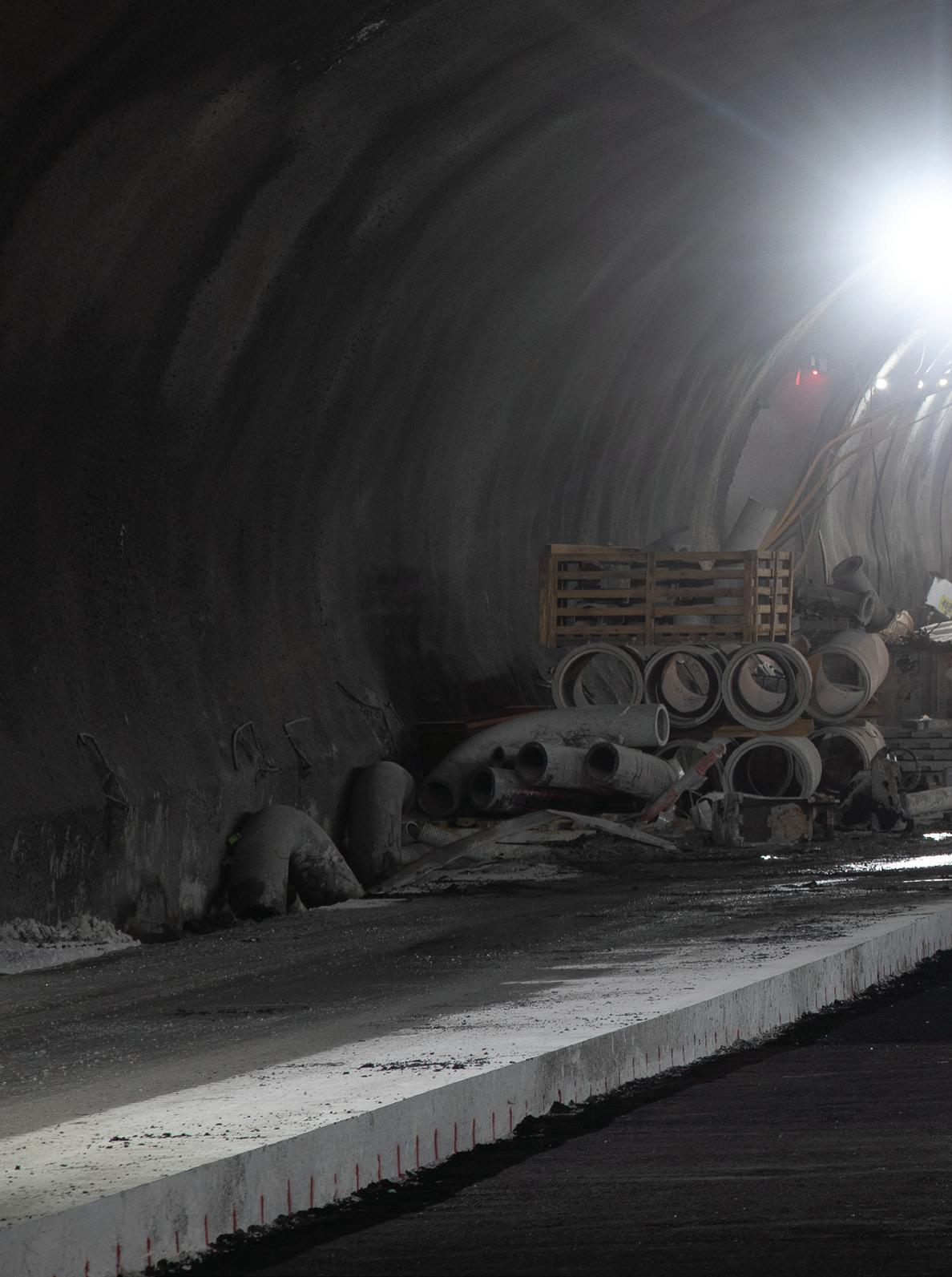
AUSTR ALIA’S LARGEST ROAD INFR ASTRUCTURE PROJECT
TUNNELS TH ROUGH
Sydney’s WestConnex project has just marked a significant tunnelling milestone and is now moving into its next exciting phase.
November 2021 // Issue 21 www.infrastructuremagazine.com.au 52 TUNNELS
Work is continuing on the M4-M5 Link Tunnels, with mechanical and electrical fit out now well underway.

www.infrastructuremagazine.com.au November 2021 // Issue 21 53 TUNNELS

In October, the final tunnel breakthrough took place on the M4-M5 Link Tunnels, part of the third and final stage of the project, bringing this critical link in the WestConnex project one step closer to completion.
As well as building 7.5km twin tunnels, the M4-M5 Link Tunnels will transform the liveability of the city by taking cars and trucks off surface roads, easing congestion for motorists, and improving liveability for local communities.
The $3.2 billion tunnel will open in 2023, and will help to slash a trip between Parramatta and Sydney Kingsford-Smith International Airport by up to 40 minutes. The benefits of an eight-minute link between the New M4 Tunnels at Haberfield and the M8 at St Peters will also be fully realised for Sydney’s commuters, families, and businesses.
GOING DEEP ON CONSTRUCTION
Usually, major tunneling milestones are welcomed with a panoramic banner, pumping music, gatherings of celebratory construction workers, media, and politicans tossing hard hats high into the air, as the roadheader is seen breaking through into sight.
Due to the COVID-19 restrictions gripping Sydney at time of writing, such an event was not possible to celebrate the tunnel breakthrough. Instead, we captured some stunning pictures (fresh off the press for this publication) and video, so as many people as possible could share the moment safely.
More than 9,000 workers have been involved in building the M4-M5 Link Tunnels, and the milestone reflects the tremendous team effort in reaching yet another goal, while ensuring the safety of every individual and every work site remains the number one priority.
The complexity of the project is shown in the stats and facts: the tunnels are up to 34m wide and eight metres high – some
of the widest in Australia, at an average tunnel depth of 35m below the surface.
In another national record, since construction began in 2018, 28 roadheaders have been used across the project, making this the greatest number of roadheaders used on a single project anywhere in Australia.
The final breakthrough occurred approximately 43m underground at Leichhardt, though at the deepest point around Newtown, the tunnels are around 55m underground.
The contractor has been responsible for excavating 22km of tunnels and ramps, moving 8.4 million tonnes of spoil to date, including up to 4.5 million tonnes of sandstone to help support construction of the runway, taxiways and roads for the new Western Sydney International (Nancy-Bird Walton) Airport.
With more than 70 per cent of the road surface now laid, mechanical and electrical fit out is now underway below the surface.
THE CRITICAL LINK TO A SAFER, FASTER, SMOOTHER JOURNEY
The M4-M5 Link Tunnels will return local streets to local communities, improving safety and easing congestion to get people where they need to be sooner. We’ve already seen traffic volumes reduced by a third on Parramatta Road since the opening of the New M4 Tunnels.
By 2033, with a completed WestConnex network, Sydney Gateway, Western Harbour Tunnel, Beaches Link and M6 Stage 1, more than 100,000 trips per day1 are expected on this motorway, instead of local surface roads.
Around 4,000 vehicles are forecast to be taken off King Street and an estimated 3,000 fewer vehicles will use Sydenham Road each weekday2
November 2021 // Issue 21 www.infrastructuremagazine.com.au 54 TUNNELS
The first of two final breakthroughs occurred at Leichhardt, 43m below the surface. Image supplied by WestConnex/Transurban.
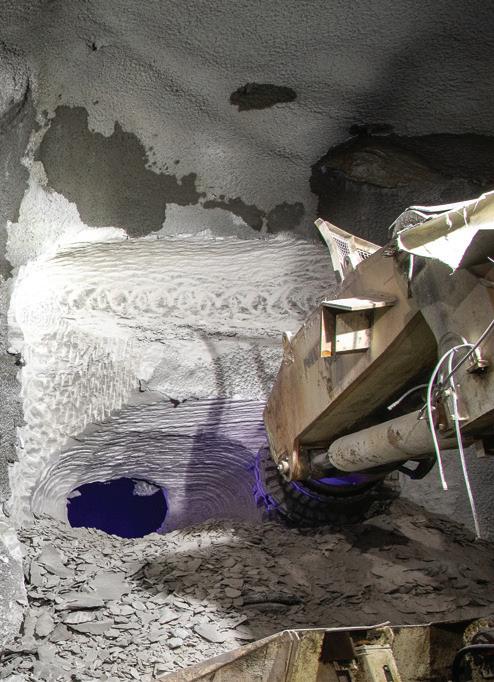

The mainline tunnels will be approximately 7.5km long and accommodate up to four lanes of traffic in each direction, and motorists will have the option to remain underground in the New M4 Tunnels and continue to travel to the St Peters Interchange, onto the M8, or connect to the Rozelle Interchange.
BETTER AIR QUALITY AROUND WESTCONNEX
WestConnex is not just about a faster, safer journey and marking construction milestones. This project will also deliver a long-term legacy for local communities.
In one of the most detailed studies of air quality around tunnels in Sydney’s history, an independent scientific study showed a ten to 15 per cent improvement in air quality along the Parramatta Road corridor, since the opening of the WestConnex New M4 Tunnels in July 20193
These healthy air quality results are great news for residents, schools, businesses and local community members in nearby suburbs including Ashfield, Haberfield, Burwood and Canada Bay.
The new underground alternative means less stop-start congestion, reduced emissions and faster travel times, meaning more time for the things that matter.
Moving traffic underground has accelerated any improvements which would be achieved with just the use of
cleaner, fuel-efficient vehicles, and world class technology and ventilation outlets have led to a substantial, permanent improvement in air quality for the community.
WestConnex is also freeing up large areas in communities that are being transformed into more than 18ha of parks, playgrounds and recreational facilities, like Ismay Reserve in Homebush, and the largely underground motorways are contributing to improved liveability for residents and business along the corridor.
BUILDING AN EVEN BETTER JOURNEY
The first stages of WestConnex have already delivered significant travel time savings for motorists, and the M4-M5 Link Tunnels will continue to reduce traffic and congestion for motorists, families and businesses by completing a 33km traffic-light free motorway network with links to western and south-western Sydney.
As COVID-19 movement restrictions ease over the coming months, construction on the M4-M5 Link Tunnels will only increase in momentum, as we build a world class underground tunnel to deliver an even better journey for motorists.
With 40 per cent of Sydney’s population expected to live within 5km of WestConnex4, and 80 per cent of the Greater Sydney Freight Task undertaken by road5, WestConnex is well positioned to support Sydney’s transport needs.
1Cumulative: the road network with NorthConnex, King Georges Road Interchange Upgrade, the New M4, the New M5 (Renamed M8) and the M4-M5 Link tunnels open to traffic and, in addition, with the proposed Sydney Gateway and Western Harbour Tunnel projects complete and operational (2023); and with the proposed Beaches Link and M6 Stage 1 on projects complete and operational (2033) community-guide-to-m4-m5-link-eis.pdf (wordpress.com)
2http://majorprojects.planning.nsw.gov.au/index.pl?action=view_job&job_id=7485
3NIWA Client report (westconnex.com.au)
4By 2031, based on Deloitte Access Economics estimates and Transurban’s own internal estimates and assessments.
5NSW Freight and Ports Plan, Part 2: The State of Freight. http://www.transport.nsw.gov.au/projects/strategy/nsw-freight-and-ports-plan-0/part-2-state-offreight#The_Greater_Sydney_freight_network
www.infrastructuremagazine.com.au November 2021 // Issue 21 55 TUNNELS
WestConnex M4-M5 Link Tunnels progress timeline. Image supplied by WestConnex/Transurban.
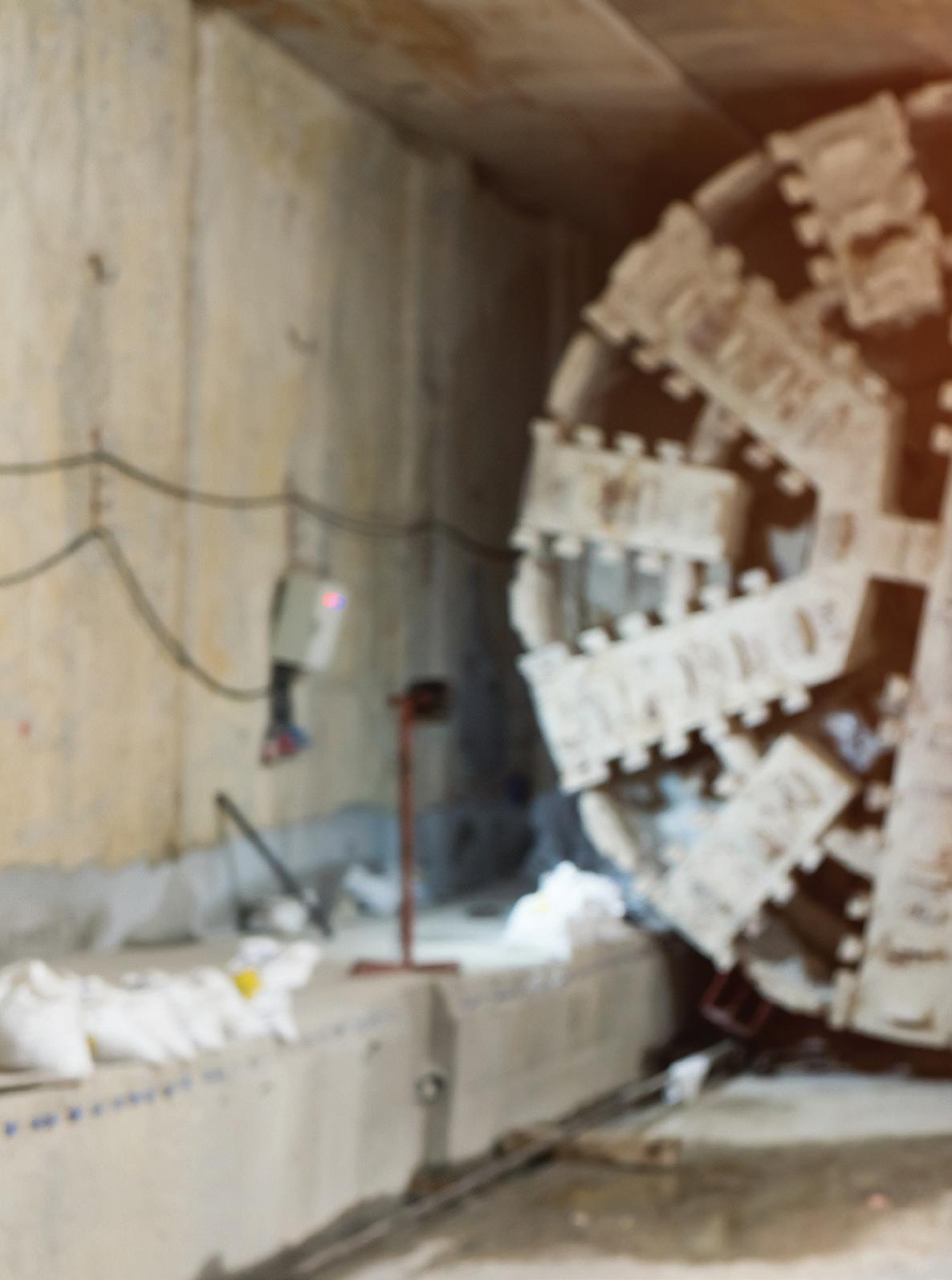
THE UNSEEN MACHINES BEHIND OUR BIGGEST INFRASTRUCTURE PROJECTS
by Christopher Allan, Journalist, Infrastructure magazine
Don’t let the name fool you: Tunnel Boring Machines (TBMs) are fascinating machines, carving out the underground road and rail tunnels of Australia’s future while leaving life at the surface undisturbed. Here we break down how exactly these giant excavators work, and look at their sizable value across the national infrastructure pipeline.
November 2021 // Issue 21 www.infrastructuremagazine.com.au 56 TUNNELS

www.infrastructuremagazine.com.au November 2021 // Issue 21 57 TUNNELS
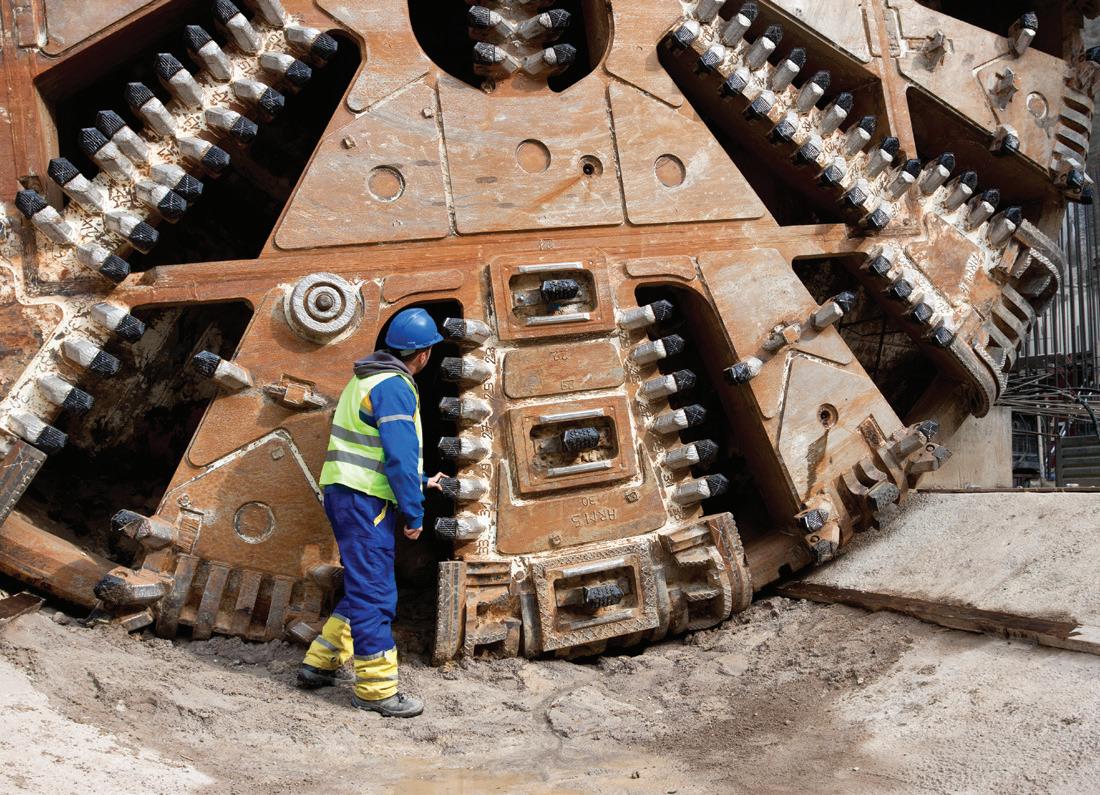
Tunnel Boring Machines (TBMs) are gigantic, wormlike machines – weighing up to 4,000 tonnes and often 90 metres long – but you probably won’t ever spot one on your local construction site.
TBMs never come cheap, are typically reserved for the most ambitious tunnelling projects in Australia’s infrastructure schedule – and did we mention that these machines love to hide up to 60m below ground?
With Australia’s major cities locked into waves of tunnel infrastructure builds – from the Sydney Metro to Melbourne’s West Gate Tunnel – it pays to learn a bit more about how TBMs work and consider their value in an expanding infrastructure sector.
TUNNEL BORING MACHINES: THE ESSENTIALS
Tunnel Boring Machines (TBMs) are like moving factories –methodically cutting through rock, dirt, or sand, transporting the excavated materials away, then laying down the foundational concrete segments of a new tunnel.
Most TBMs comprise a rotating cutting wheel or cutterhead, a main bearing, and trailing support mechanisms.
TBMs come in many different shapes and sizes: the two machines used in Melbourne’s West Gate Tunnel project are some of the largest in the Southern Hemisphere, weighing 4,000 tonnes, stretching 90m long and 15.6m high.
All Tunnel Boring Machines are typically given female names, a long-standing tradition in recognition of Saint Barbara, the patron saint of miners who is said to protect those working underground.
THE TBM PROCESS
When constructing a new tunnel, a Tunnel Boring Machine starts carving through rock and soil with its rotating cutterhead, which can be 15m wide.
A conveyor belt or pump will send excavated material to the rear of the TBM, before the material is sent back through the tunnel to the surface.
As the machine moves forward, a concrete lining is installed by a specialised rotating machine.
Once this machine has finished the tunnel’s walls, roof and base, specialised crews behind the TBM will build the road surface, installing electrics, ventilation, and safety systems.
Crews will often inspect the TBM cutterhead in teams of up to four, entering a pressurised air lock that protects them from groundwater and allows them to perform routine maintenance.
The physical effects of this airlock can be equivalent to scuba diving at a depth of up to 35m, so inspection workers will typically spend up to two hours depressurising before returning to the surface.
When TBMs are deployed to bore two parallel tunnels, crews will often use traditional mining techniques to add cross passages that link the two structures, an important safety feature in the event of an emergency: Melbourne’s Metro Tunnel project will feature 26 cross passages, located every 230m along the tunnel alignment.
TBMs are typically controlled by an operator and a crew of up to 20 people. Because TBMs lay an average of just ten metres of tunnel every 24 hours, adequate staffing arrangements are critical to optimise continuous operation.
November 2021 // Issue 21 www.infrastructuremagazine.com.au 58 TUNNELS
A common solution to overcome this ten-metre daily limit is to source multiple TBMs to work on the same tunnel route in a kind of ‘meet-in-the-middle’ approach.
In fact, London’s Crossrail project recently called on a total of eight TBMs to build a massive 42km of new rail tunnel, in just over three years.
TBMS DOWN UNDER: CHALLENGES AND PROJECTS
Tunnel Boring Machines are found across infrastructure projects nationwide, servicing some of the most ambitious road and rail tunnel projects in our country’s history.
Major transport projects are integral in many ongoing federal and state government infrastructure plans, to the extent that some industry leaders have speculated that future projects may struggle to run concurrently, given the COVID-19 pandemic’s strain on human resources in the sector.
Indeed, because TBMs are both expensive and difficult to move, state and federal governments need to plan carefully around the national distribution of these major infrastructure assets.
For example, two TBMs that worked on Sydney’s new Metro tunnel have now been procured for Brisbane’s Cross River Rail, a win for both sustainability and the national infrastructure schedule.
Here are some of the most ambitious tunnel projects leveraging TBMs to deliver futureready infrastructure without the short-term inconvenience.
Mix shield TBMs typically blend excavated materials with slurry, allowing the raw material to be easily transferred above ground to a slurry treatment plant.
The four Metro Tunnel TBMs were named as follows:
♦ TBM Joan, in recognition of the first female Premier of Victoria, Joan Kirner
♦ TBM Meg, in recognition of the Australian cricket captain, Meg Lanning
♦ TBM Alice, in recognition of wartime medical hero of both World Wars, Alice Appleford
♦ TBM Millie, in recognition of Victoria’s first female Member of Parliament, Millie Peacock
CROSS RIVER RAIL PROJECT (BRISBANE)
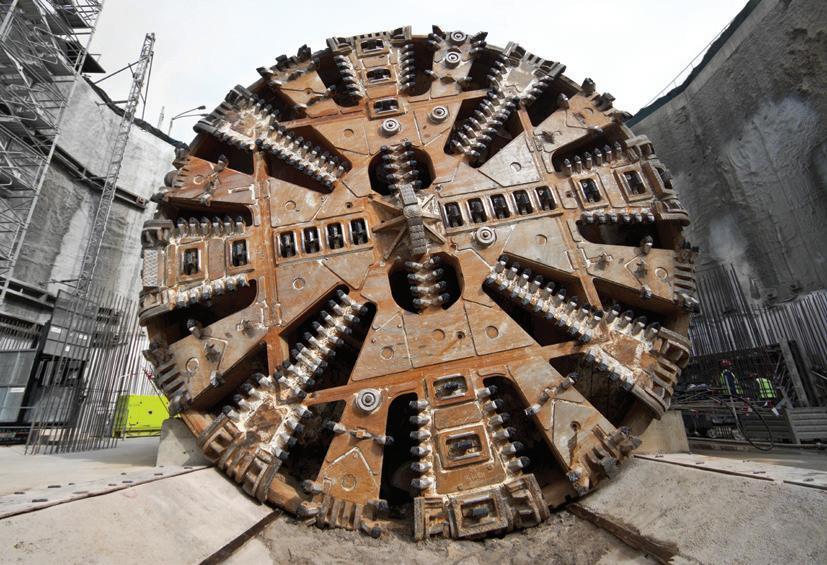
SYDNEY METRO
The Sydney Metro project has already utilised five Tunnel Boring Machines in the City and Southwest project, tunnels stretching from Chatswood to Sydenham.
One specialised TBM – named Kathleen – was tasked with digging a historic rail crossing underneath Sydney Harbour, cutting through 175,000 tonnes of sandstone, clay, and marine sediments.
TBM Kathleen takes its name from Kathleen Butler, a woman who was fittingly nicknamed ‘Godmother of Sydney Harbour Bridge’ for her work as technical advisor to John Bradfield.
Other TBMs of the Sydney Metro project include TBM Nancy, named after Nancy Bird Walton OBE, and TBM Mum Shirl, in honour of Colleen Shirley Perry.
METRO TUNNEL (MELBOURNE)
In May 2021, it was announced that the four TBMs of Melbourne’s Metro Tunnel project had finished digging the twin 9km tunnels of the Metro Tunnel between South Yarra and Kensington.
The Metro Tunnel project utilised mix shield TBMs, which are perfectly suited to local ground conditions.
The Queensland Government has procured and launched two TBMs from the Sydney Metro project for Brisbane’s ongoing Cross River Rail project.
The Cross River Rail is a 10.2km rail from Bowen Hills to Dutton Park, set to feature 5.9km of twin tunnels beneath the Brisbane CBD and the Brisbane River. One of the state’s most important job-generating projects, the Cross River Rail hopes to resolve a major bottleneck in rail converging on Brisbane River and city centre.
The two TBMs currently underway in the Cross River Rail
TBM Else, in recognition of Else Shepherd AM, an engineer and academic who was the first woman to graduate with an electrical engineering degree in Queensland TBM Merle, in recognition of Merle Thornton AM, an academic and feminist activist who famously chained herself to a bar rail in 1965 to protest the exclusion of women from public bars
THE WEST GATE TUNNEL PROJECT
While the West Gate Tunnel Project has already secured two of the largest TBMs in the southern hemisphere, named Bella and Vida, tunnelling is yet to start due to delays surrounding the project.
For over a year, the West Gate Tunnel Project had stalled due to an inability for stakeholders to agree on where contaminated soil from the tunnel’s predicted location would be transferred to.
Indeed, what began as a funding stand-off between Transurban, John Holland CPB and the State Government further disintegrated, when Victoria’s Environment Protection Authority (EPA) reversed an initial decision on the soil’s fate.
But in June this year, the West Gate Tunnel’s soil finally found a home: Hi-Quality’s landfill site in Bulla.
With construction of the West Gate Tunnel Project back on track, it is likely that TBMs Bella and Vida will be put to good use soon.
TBMs Bella and Vida are named in honour of Bella Guerin, the first woman to graduate from a university in Australia, and Vida Goldstein, a ground-breaking campaigner for women’s rights and suffrage.
www.infrastructuremagazine.com.au November 2021 // Issue 21 59 TUNNELS
IMPROVING INFRASTRUCTURE RESILIENCE TO BUSHFIRES
by Justin Leonard – Bushfire Adaptation Research Leader, at Australia’s National Science Agency, CSIRO
CSIRO’s Bushfire Adaptation research leader, Justin Leonard, explains how Australia’s national science agency, CSIRO, is working with industry to tackle a major threat to critical infrastructure – bushfires.
Bushfires are one of the biggest threats facing all industries that rely on critical infrastructure.
Telecommunication towers are vulnerable to damage from bushfires and storms. Yet they play a critical role in connecting communities to help us through these extreme events.
So telecommunications companies are seeking ways to reduce the risk of bushfire damage, improve their network resilience, and support the customers who rely on their services.
CSIRO has teamed up with Optus to better understand where the risks of fire damage are to its network. Our work will also help prioritise upgrades to reduce its vulnerability in future bushfires.
THE RESILIENCE CHALLENGE
With Australia facing a future of extreme weather events exacerbated by climate change, building resilience is the key to Australian communities resisting, absorbing and recovering from natural disasters such as bushfires.
Our research has shown that every dollar the government invests in climate adaptation or disaster risk reduction saves between $2 and $11 in recovery.
approach, a coordinated effort, and the knowledge and capability from a wide range of professional and scientific disciplines.
Since mid 2020, CSIRO and Optus have collaborated to assess the bushfire “loss potential” of all relevant Optus sites across Australia and determine best-value upgrades to reduce hazards.
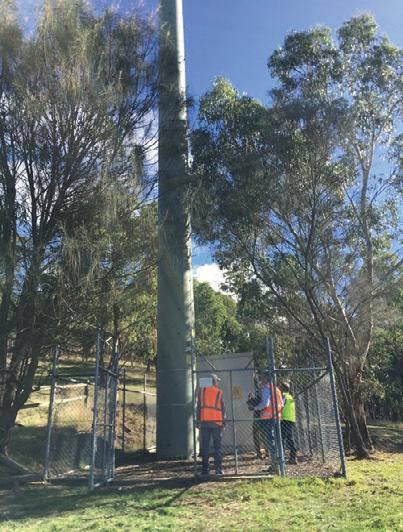
It’s a challenge that requires a collaborative, integrated
We’ve studied and systematically profiled the potential and nature of impacts of embers, radiation and flame on and around Optus’ sites with telecommunications equipment.
We have used these learnings to assess which sites were most at risk, and which site design and maintenance changes should be Optus’ commercial priority.
SPOTTING THE HAZARDS
The study involves analysing all Optus national network sites across all states and territories across Australia. The data includes information on the local topography, the amount of combustible vegetation (known as fuel load), vegetation type and local bushfire weather severity.
We use this information to study the potential impacts of embers, fire radiation and flame on and around telecommunications equipment. Then, we map sites most at risk and prioritise site improvements.
November 2021 // Issue 21 www.infrastructuremagazine.com.au 60 DISASTER MANAGEMENT
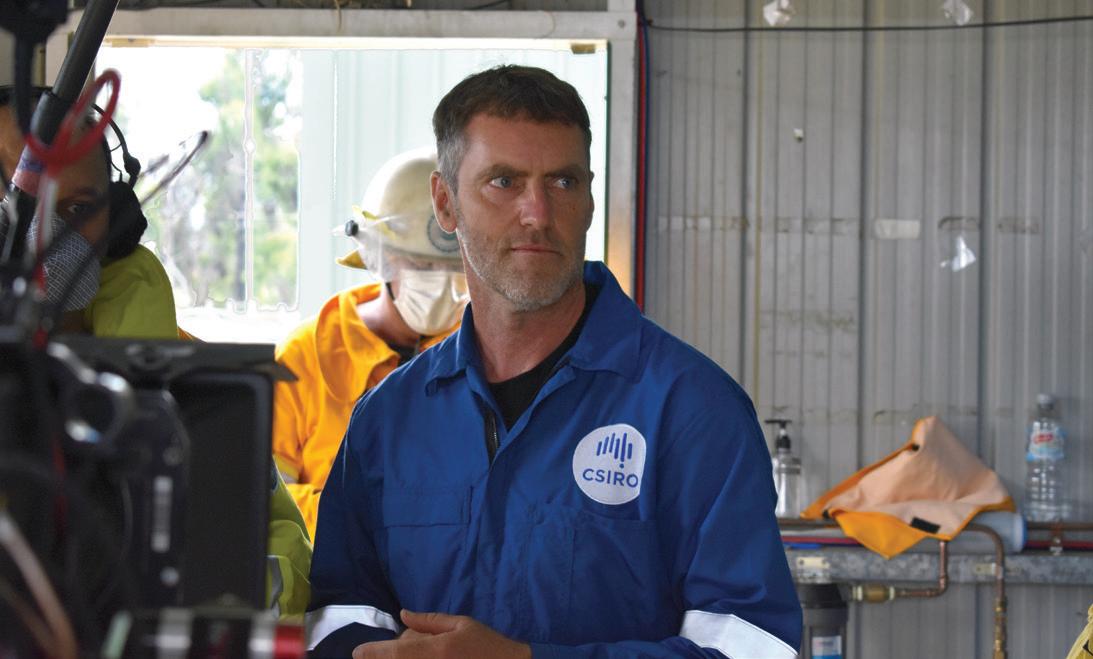
Optus has now implemented the recommended mitigations at two of its sites in Victoria: Seville East and Dixons Creek, to act as examples to showcase that a larger longer-term resiliency program is able to reference.
This project determined the best value return to reduce a site’s bushfire loss potential and underpinned in-house training to improve employees’ awareness of threats and preparedness to reduce them.
Optus has also used these findings to identify and invest in the most impactful upgrades.
TARGETING INVESTMENT
They also provide examples for other infrastructure companies to learn how best to protect their most vulnerable infrastructure.
The research can inform resiliency decisions across a number of industries, not only telecommunications, but also energy and emergency services.
For example, improving power infrastructure can help decrease outages in bushfires. As a result, it improves the resilience of telecommunications services as these networks rely on power.
The project is an early indicator of the relevance of the work scientists will do through National Bushfire Intelligence Capabilities (NBIC). The NBIC was developed with Emergency Management Australia in response to the devastating 2019-20 bushfires.
It will be delivered with the National Recovery and Resilience Agency, as part of the Australian Climate Service. The ACS is providing climate and natural hazard information and insights to support our national emergency management and climate resilience efforts. CSIRO is a key partner in the ACS, along with the Bureau of Meteorology, Australian Bureau of Statistics and Geoscience Australia.
EVIDENCE-BASED APPROACHES
CSIRO has a significant role to play in providing reliable, actionable research and developing the best practice methods and techniques that will help build infrastructure resilience.
Our focus is on Australia-specific solutions that take into account our unique geography, climate, cultural heritage and environment.
But by adopting an evidence-based, multidisciplinary approach, there is also a clear opportunity for Australia to become a global leader in climate and disaster resilience.
To find out more about CSIRO’s resilience-building research, head to www.csiro.au/en/research/environmental-impacts/Disaster-Resilience.
Justin Leonard has dedicated the last 22 of his 26-year research career to understanding how bushfire risk to life and infrastructure can be managed. His work has built on the learning of an already established research area within CSIRO in which he was initially mentored and then inherited. The research area combines learnings from bushfire exposure experiments with post bushfire survey investigations and computer modelling of bushfire interactions with buildings.

www.infrastructuremagazine.com.au November 2021 // Issue 21 61 DISASTER MANAGEMENT
R ETU r NING TO THE OFFICE: HOW SAFE WILL IT BE?
As employees begin to return to the workplace, they need to have confidence that their office is a safe and healthy environment.

Alot has been said and written about returning to the office, with businesses adopting various hybrid models. While catching up with work colleagues they have not seen face-to-face for many months will be celebrated, there is still work to be done to give employees confidence that the buildings they are returning to are not going to lead them to catching COVID-19.
Jennifer McIntyre, the Head of Smart Infrastructure Engineering at Siemens Australia, said technology that enables data capture and analysis, connectivity, monitoring and control is becoming the new baseline for the smart buildings of today.
“Understanding what it is and where it is headed is critical,” Ms McIntyre said.
“Firstly, there is a need to reduce the reliance on manual and time-consuming tasks such as QR code check-ins and social distancing signage, which often see human error or simple complacency.
“We want to reduce the effort we put in and have our buildings functioning in the background to provide a healthy and safe environment. That is not about adding a lot of tech, it is about using what is already available with just a few modifications.”
TEMPERATURE MATTERS
Ms McIntyre said it is well known that COVID-19 thrives in cooler environments and becomes aerosolised in a less humid environment.
She said that according to experiments documented in the Lancet Microbe Journal in early 2020, the increase in humidity reduces a pathogen’s ability to be aerosolised. Higher temperatures, above 30 degrees Celsius, can decrease the half-life of the virus from days to as low as two hours.
“Even an increase of 1.5 degrees from base room comfort, which is around 22 degrees, can result in a 10 to 25 per cent reduction in half-life. This has minimal impact on comfort in most circumstances,” Ms McIntyre said.
“Additionally, most buildings have the air system on during the day and either off or at a low energy setting when unoccupied. We should be looking at introducing a defence mode and a decontamination mode, which will change the indoor air conditions to help deactivate and reduce pathogens in the air and on surfaces.
“By monitoring what is in the air, a building can be programmed to change modes overnight or when decontamination is required, as well as to implement defence modes even while the building is occupied.
“This means an increase of fresh air from outside in addition to an increase of temperature and humidity which can help dilute and deactivate viruses and pathogens.”
THE ROLE OF TECHNOLOGY
Ms McIntyre said technology also has a role to play in how we clean facilities, especially those which have a confirmed COVID positive case; where you want a deep clean that doesn’t put the cleaning staff at risk by simply entering a room.
“One solution is an ultraviolet light system which can deliver a broad spectrum of UV light paired with the introduction of increased fresh air, high temperature and humidity. These will provide that first level of sanitisation without a person having to enter a room where a COVID positive case was detected.
“Additionally, there is track and trace wearable technology, which can provide not only information on occupant density, but there are features which enable digital contact tracing, thus reducing reliance on QR codes and providing a more accurate representation of who a person interacted with, within the building, in an exposure event.
“To put it all together, occupancy and environmental monitoring are critical to providing relevant inputs to enable intelligent controls systems to respond to changing conditions and preemptively provide a safer environment for employees to return to.”
For more information, go to siemens.com.au
November 2021 // Issue 21 www.infrastructuremagazine.com.au
62 DISASTER MANAGEMENT // SPONSORED EDITORIAL


REGISTER ONLINE TODAY Visit airports.asn.au to find out more Hear expert advice from industry speakers about the latest diversity challenges and how we overcome them. Discover ways to master presentations and deliver your messages clearly. Ensure your voice is heard. Network with like-minded peers and help to develop an Airport Gender Equity Strategy. LISTEN LEARN ACHIEVE 15 NOVEMBER VIRTUAL EVENT MONDAY

A MENTAL HEALTH AND WELLBEING ROADMAP FOR
SUPPLY CHAIN WORKERS
64 DISASTER MANAGEMENT
by Naomi Frauenfelder, Chief Executive Officer, Healthy Heads in Trucks &
Sheds
The global pandemic has unquestionably placed immense pressure on the supply chain sector, and no more so than on the people working on the frontline.
While many Australians were asked to stay at home to protect themselves and their families from COVID-19, truck drivers and warehouse and distribution centre staff across the country put themselves at risk to keep the sector moving, and ensure our communities have continued to have access to essential supplies.
Businesses such as Australia Post saw record volumes of parcels through their delivery networks, forcing significant change across the business in order to meet demands. This was the reality for many organisations throughout 2020 to 2021, with no end in sight.
Panic buying, an eCommerce boom and a growing sense of demand from the general public led to overwhelming levels of strain on the sector and its people. These unprecedented factors have been compounded by ongoing border closures, changing COVID-19 situations and testing requirements across different states, and fear of contracting the virus. This has led to feelings of uncertainty and stress, and for many, there seems to be no light at the end of the tunnel.
As we find ourselves nearing the end of 2021, the sector faces a unique set of challenges as a result of the pandemic for over 18 months. While the ability of the industry and people within it to adapt and change has been outstanding, we need to appreciate the toll that it has taken on the many people and businesses impacted.
THE RISK FACTORS THAT IMPACT MENTAL HEALTH
For the industry to move forward, we need to better equip our leaders, managers, staff and the wider workforce with tools, resources and training to build resilience and create an industry where people are better able to cope with challenges as they arise. At Healthy Heads in Trucks & Sheds (HHTS), our role is to help coordinate and facilitate the three-year National Mental Health and Wellbeing Roadmap (the Roadmap) strategy.
The Roadmap provides an integrated approach for leaders and managers to support and protect employees. Traditionally, mental health in the workplace has been centred on raising awareness and providing support. Although this is critically important, the Roadmap also places an emphasis on prevention, including leadership capability, smarter work design and workplace culture. By doing more upstream, we may be able to help people before they become mentally unwell.
Over time, as HHTS embeds an understanding of the Roadmap, we, as an entire industry, can build better work cultures that champion support and recovery, with a focus on increasing the resilience of the entire workforce. In the future, we hope that if a person is struggling in work or in their personal life, their workmates will be able to support them with the right tools and strategies.
The Roadmap itself sets out the risk factors that directly impact the mental health and wellbeing of those in the sector:
♦ Trauma and critical incidents
♦ Long hours, shift work and fatigue
♦ High job demand
♦ Isolation and social disconnection
♦ Gambling addiction and excessive behaviour
♦ Third-party workforce arrangements
♦ Mental health stigma Unfortunately, the added pressure that has been placed on the workforce during the pandemic has only exacerbated the likelihood of people in the industry experiencing these risk factors and reinforces the importance of preventative measures.
PREVENTION, PROTECTION AND SUPPORT
The Roadmap suggests that a psychologically safe and thriving workplace promotes mental health and wellbeing. It supports those who already experience positive mental health and contributes to stopping or lessening movement along the mental health continuum. Building a workplace
that is psychologically safe and thriving requires a systemic and integrated approach to supporting mental health, seeking to create an environment where the mental health and wellbeing of all workers is prioritised.
In doing so, businesses must move beyond awareness and look to adopt the Framework that sits within the Roadmap – prevention, protection and support. This Framework is built around the components of preventing harm, intervening early and supporting recovery. Applying this evidencedbased approach along with the seven workplace strategies within the Roadmap will support businesses at all levels of the sector in making progress toward creating, not only psychologically safe and thriving working environments, but a happier and healthier industry as a whole.
Over the next three years organisations across the road transport, warehousing and logistics industries will move through different stages of workplace psychological safety. The intention of the Roadmap is to promote improvement, no matter which level an organisation is currently at, supporting workplaces from foundational maturity to best practice, and everywhere in between. The focus is on continuous improvement and helping organisations that are just starting out know where to begin.
By 2024, three years on from the launch of the Roadmap, we hope that the mental health and wellbeing landscape of the supply-chain sector looks markedly different to what it does today. We aspire to have achieved industry-wide adoption and support of the Framework within the Roadmap, making our sector a leader when it comes to mentally healthy workplaces.
We hope that mental health is as everyday as safety, and that stigma relating to mental health is a thing of the past. Finally, we hope to see a positive change against key risk factors and to have positioned our industry with the tools and resources it needs to address challenges as they may arise in the future.
www.infrastructuremagazine.com.au November 2021 // Issue 21
65 DISASTER MANAGEMENT

MAKING THE MOST OF STRATEGIC PARTNERSHIPS IN RENEWABLE ENERGY

Fby Danny Touma, PwC Australia’s Integrated Infrastructure team – Environmental Transactions & Advisory
When the ground is shifting or the going is tough, joining forces can make a lot of sense. The booming Australian renewable energy market is a changing and challenging environment, but it also offers enormous opportunity for developers and investors willing to work together for mutual benefit.
or renewable energy developers, a combination of challenges is increasing the cost and complexity of projects and making it harder to reach financial close.
Connecting to the grid and securing offtakes is not as simple as it was, so the benefit of having the ultimate project owner involved in key project development items is becoming more pronounced. For developers, partnering with an investor may offer early access to capital and credit, greater financial security, and support to secure power purchase agreements. Developers may also benefit from an investor’s expertise and networks that can be leveraged in lobbying and advocacy to successfully bring projects to financial close and commercial operations.
For investors, partnering with a renewable energy developer is an effective path to better carbon credentials. The world’s biggest utility giants, oil and gas majors, and financial investors are keen to capitalise on the renewables boom, with its potential to improve their environmental, social and governance bottom line as well as deliver growth.
The dynamic forces at play in Australia’s renewables sector are transforming the structure of deals. We expect to see continued market consolidation, with renewable developments increasingly steered by large strategic investors and infrastructure funds.
THE INVESTOR/DEVELOPER PARTNERSHIP
While every deal is unique, they are usually built on one of two structures. In the first model, the investor purchases all or part of the development company, gaining access to the expertise of the developer’s team, and part or all of the portfolio of projects.
The investor benefits from spreading asset-specific risks across a portfolio, and the developer benefits from upfront payment and pipeline funding. They may also benefit from access to the resources of a large enterprise (e.g. governance, technical, construction, and government relations expertise).
The second model involves a large strategic investor buying all or some projects in a developer’s pipeline. Set milestones are agreed upon for each project, and responsibilities are allocated between the investor and the developer. These arrangements can be an effective way for investors to mitigate risk, and for developers to retain a greater degree of autonomy.
HAVING A CLEAR UNDERSTANDING FROM THE START
It is always better to identify misalignments between the two parties during due diligence, rather than rushing in and discovering fatal problems too late. Investors and developers need to enter negotiations with a realistic view of one another’s expectations, capabilities, and risk appetites.
November 2021 // Issue 21 www.infrastructuremagazine.com.au 66 FUNDING / INVESTMENT

Communication, honesty, and trust are at the core of the strongest partnerships. Both parties should clarify their levels of influence, responsibility for delivering key project milestones, and the funding arrangement (process and amounts) for development capital and developer profits.
It’s also important to identify non-financial synergies and examine how compatible each organisation is in terms of management and culture. A good cultural fit can make a tremendous difference when the pressure is on.
To build an effective, mutually beneficial partnership, there are several important actions that each party should take:
Developers
Developers should begin with an objective look at their own organisation and portfolio. This will enable developers to articulate their strengths and capabilities, identify areas that could benefit from a large investor’s input and expertise, outline realistic project timescales and expectations for connecting to the grid, and clarify non-negotiable features of any prospective deal. Developers that can take a clearly identified product to the market will be in a good position to execute a transaction with the right investor.
Developers need to be asking; are we more likely to succeed by entering into this relationship? What is unique about this potential investor? What resources, networks and expertise might we gain from being part of this group? How does this investor’s strategy, culture and governance align with our organisation?
Also, how would we fit within this investor’s portfolio and broader strategy? How can we ensure our projects remain a priority? What is our competition internally for capital? What level of governance and reporting will the investors require, and can we deliver on these requirements?
Investors
Investors should enter any negotiation with respect for the developer’s expertise, skills, and methodology – and with clarity about what they can offer the developer beyond access to capital. How and when does the investor expect to be involved in decision-making, and what accountabilities, delegations, checks, and balances will they establish?
Investors should also seek to validate the developer’s proposals and understand the risk profile of the transaction.
Foreign investors will increase their likelihood of success if they attempt to understand the regulatory landscape and local energy market, and develop a clear strategy for government interaction and engagement. Investors should also be prepared to authentically engage with the local community.
Key questions investors need to be asking include; what is the developer’s history of successful projects? What differentiates the developer from other competitors? How is the developer internally resourced and structured? How can we support the developer? Does the developer expect our assistance to reach grid connection and financial close? What are the gaps in development capabilities after considering both our capability and the developer’s capability? How can these gaps be filled? What are the developer’s expectations for price and value from its portfolio? How does this developer’s culture align with our organisation?
When developers and investors work together, a complex environment can be managed, and even harnessed, for mutual benefit. Taking the time to consider the steps and questions outlined here – and seeking the right advice and support – will set you on the path to successful partnerships and longterm rewards.
www.infrastructuremagazine.com.au November 2021 // Issue 21 67 FUNDING / INVESTMENT
FEATURES SCHEDULE
March 2022
Deadline: 21 January 2022
Roads and Traffic Digital Twins
Software, communications and connectivity
Signalling, tracking and control systems
Condition monitoring and maintenance
Spatial & GIS
DISTRIBUTION
September 2022
Training and skills
June 2022
Deadline: 8 July 2022
Ports Asset Management
AI and machine learning
Intelligent Transport Systems (ITS)
Safety and risk management
Sustainability
DISTRIBUTION TBC
November 2022
Deadline: 15 April 2022
IoT
Funding/investment
Deadline: 30 September 2022
68 November 2021 // Issue 21 www.infrastructuremagazine.com.au ADVERTISERS’ INDEX
Acmena Group 31 Aerometrex 13 AGD Systems 10 AllightSykes 17 AusRAIL Plus IBC Australian Airports Association 63 Australian Private Networks IFC Council Magazine 3 Inauro 11 Knight Frank Australia OBC Madison Group Enterprises 51 Mastt 39 Milwaukee Tools 25 Parchem Construction Supplies 9 Polymaster 1 Quality Technical Services LLC 16 SICK 45 Siemens 24, 62 STRAILastic Australia 33 tm stagetec systems 32 Airport Urban development Smart cities Bridges Automated and electric vehicles Freight and logistics DISTRIBUTION NATIONAL ROADS & TRAFFIC EXPO (TBC) SYDNEY BUILD EXPO (TBC) LOCATE22 (TBC)
Rail Security Disaster management Tunnels
Drones/UAVS
&
cloud communication
DISTRIBUTION TBC
VICTORIAN TRANSPORT INFRASTRUCTURE CONFERENCE
(TBC)




AusRAIL PLUS returns as a physical conference and exhibition, moving to the ICC Sydney on Monday 28 February – Wednesday 2 March.
The event will champion the outstanding contribution of the rail industry in keeping people, goods and the economy moving. From Inland Rail and Cross River Rail in Brisbane, to the Metro in Sydney and rollingstock upgrades in Victoria. The number of transformative rail projects underway across Australia and New Zealand highlights the important role rail will play to support our economic recovery.
For sponsorship, exhibition and advertising enquiries, please contact: Deborah.Bocock@informa.com.au
Due to exceptional interest, space and sponsorship opportunities are limited. Book soon!
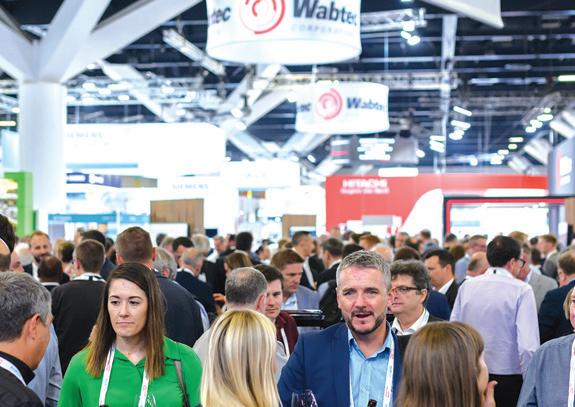
SPONSORS









Premium Gold
RTAA Dinner Sponsor Gold Sponsor Innovation Hub Sponsor Copper Sponsor Networking Drinks Sponsor Official App Sponsor Exhibition Decal Sponsor Lanyard Sponsor Delegate Backpack & Cap Sponsor Welcome Reception Sponsor Next Generation Conference Scholarship Sponsor Supporting Sponsor MEMBER DISCOUNTS AVAILABLE REGISTER TODAY WWW.AUSRAIL.COM ICC SYDNEY | 28 FEB-02 MAR 2022 CONFERENCE & EXHIBITION PLUS
SYDNEY IN 2022! Organised by
&
AUSRAIL PLUS IS MOVING TO










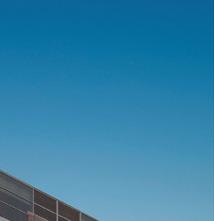



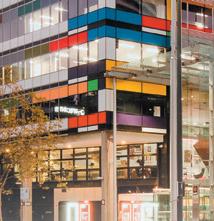

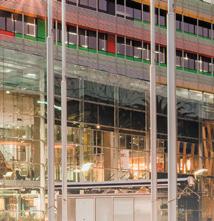




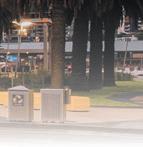














 Published by
Published by

















 FChris Melham CEO,
FChris Melham CEO,






























 Tby Peter Colacino, Chief of Policy and Research, Infrastructure Australia
Tby Peter Colacino, Chief of Policy and Research, Infrastructure Australia

 by Chris Melham, Chief Executive Officer, Civil Contractors Federation National (CCF)
by Chris Melham, Chief Executive Officer, Civil Contractors Federation National (CCF)



 Hby Kristine Scheul, National Chair, the National Association of Women in Construction (NAWIC)
Hby Kristine Scheul, National Chair, the National Association of Women in Construction (NAWIC)




 Tby Priscilla Radice, CEO, Infrastructure Association of
Tby Priscilla Radice, CEO, Infrastructure Association of











 by Caroline Wilkie, Chief Executive Officer, Australasian Railway Association (ARA)
by Caroline Wilkie, Chief Executive Officer, Australasian Railway Association (ARA)



 by Catherine Baxter, Chief Operating Officer, Metro Trains Melbourne, and Chief Executive Officer, Metro Academy
by Catherine Baxter, Chief Operating Officer, Metro Trains Melbourne, and Chief Executive Officer, Metro Academy

















 by Lauren DeLorenzo, Journalist, Infrastructure magazine
by Lauren DeLorenzo, Journalist, Infrastructure magazine





















































